*Liturgy Note: The Mandatum (Commandment, washing of feet) is done outside of the Mass and has its own prayers and ceremony. It is not required and was not done at the Oratory this year.
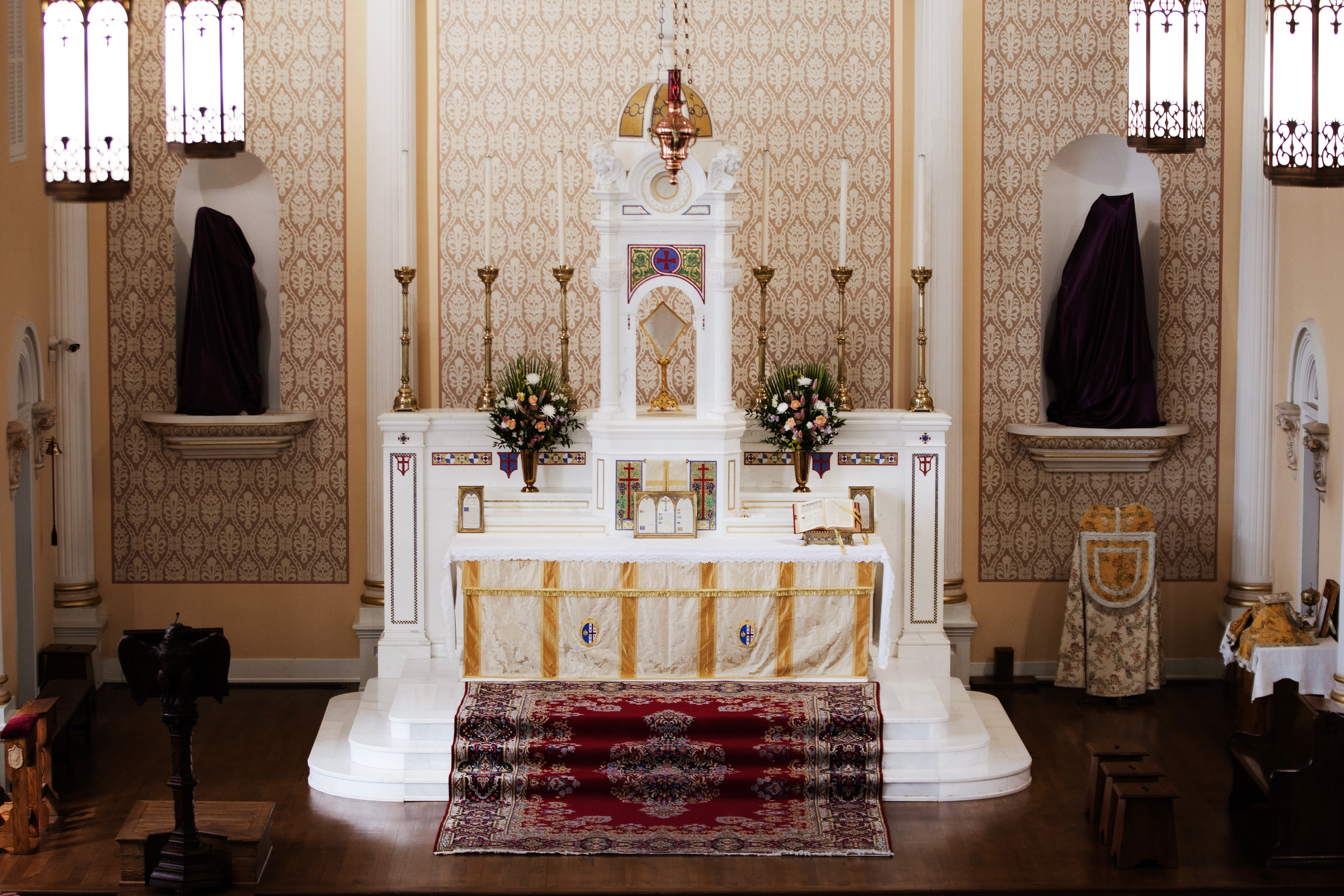
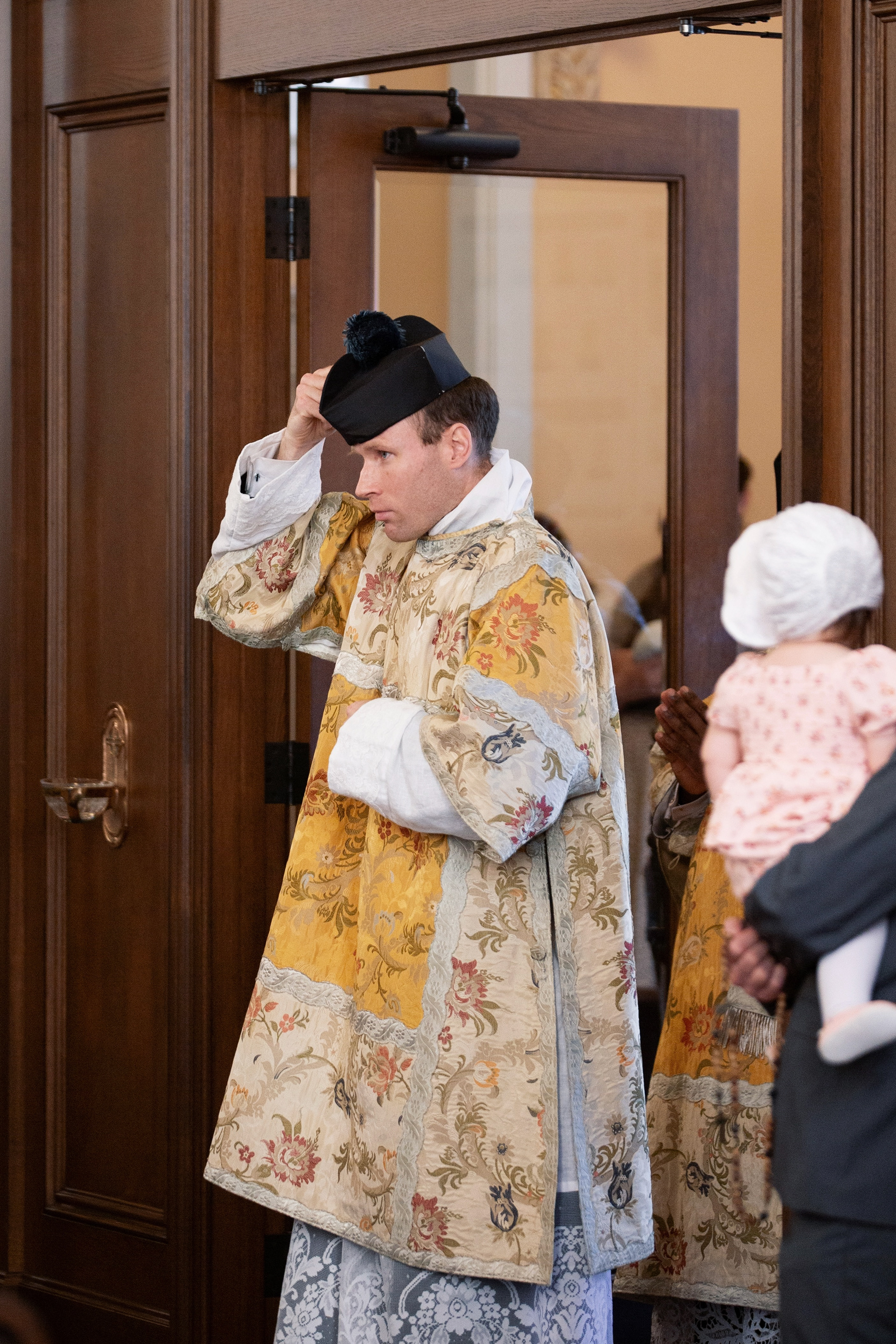
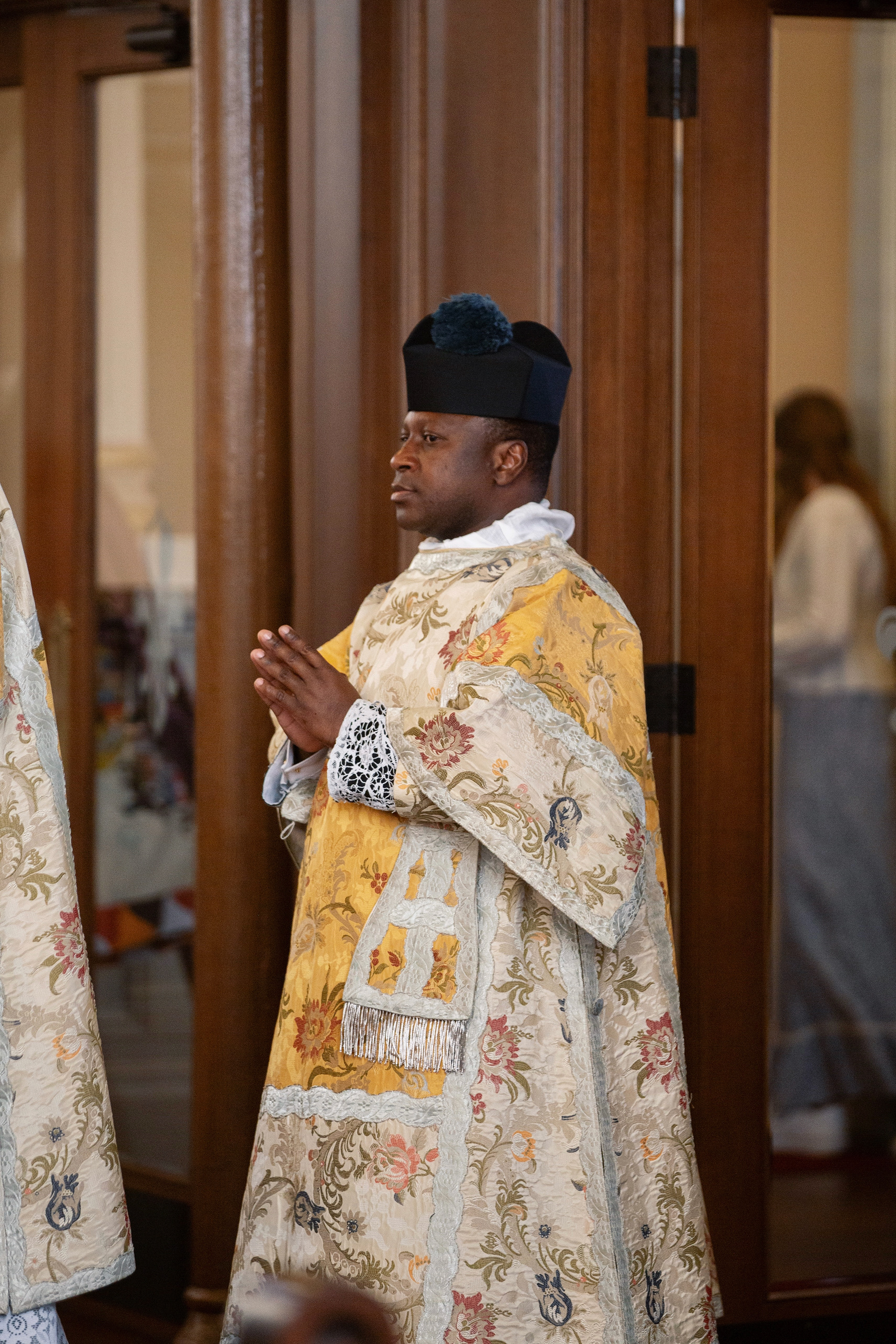
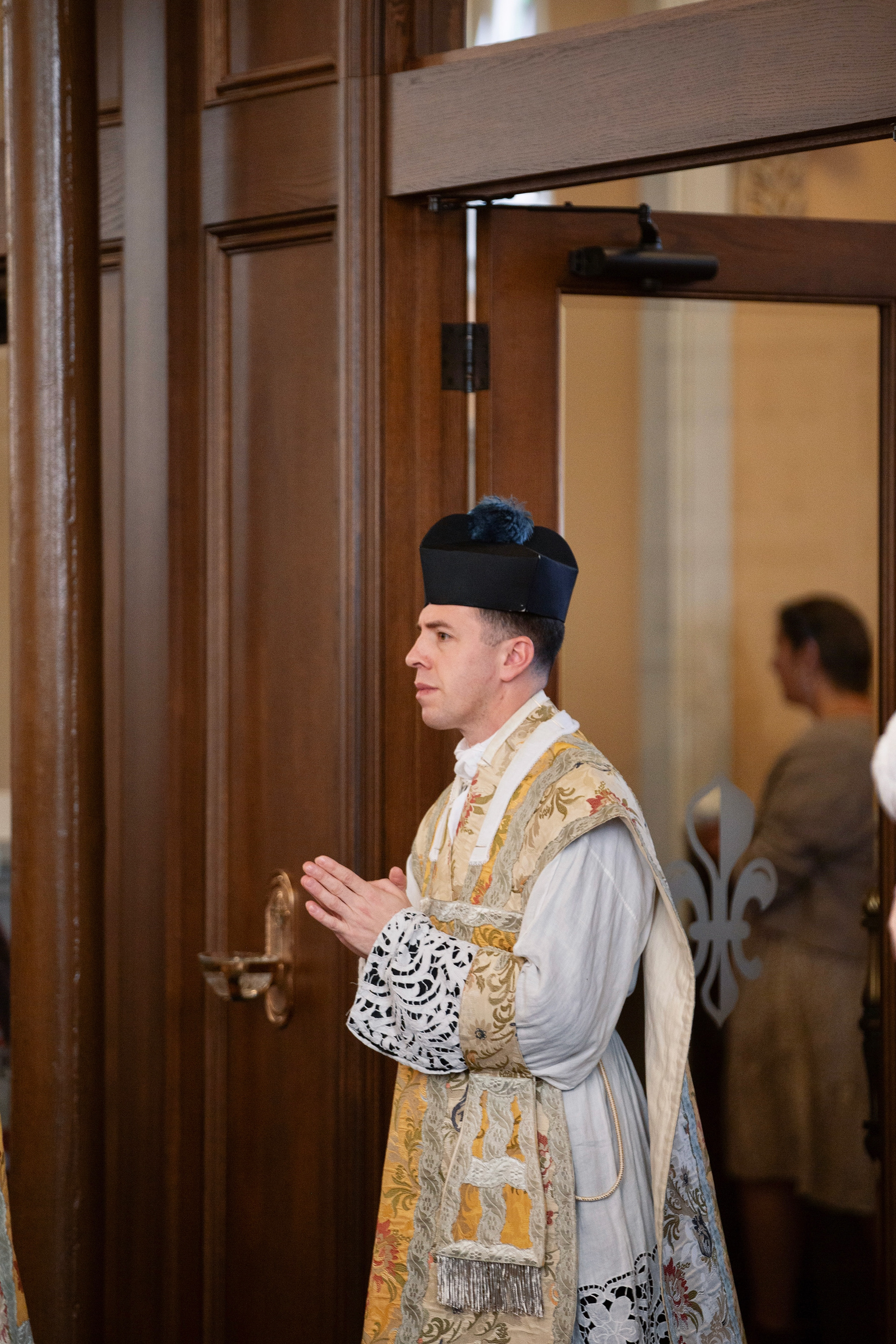
The sacred ministers enter and Mass begins. Psalm 43 (Douay Rheims 42) is omitted from the Prayers at the Foot of the Altar, as it has been for all of Holy Week.
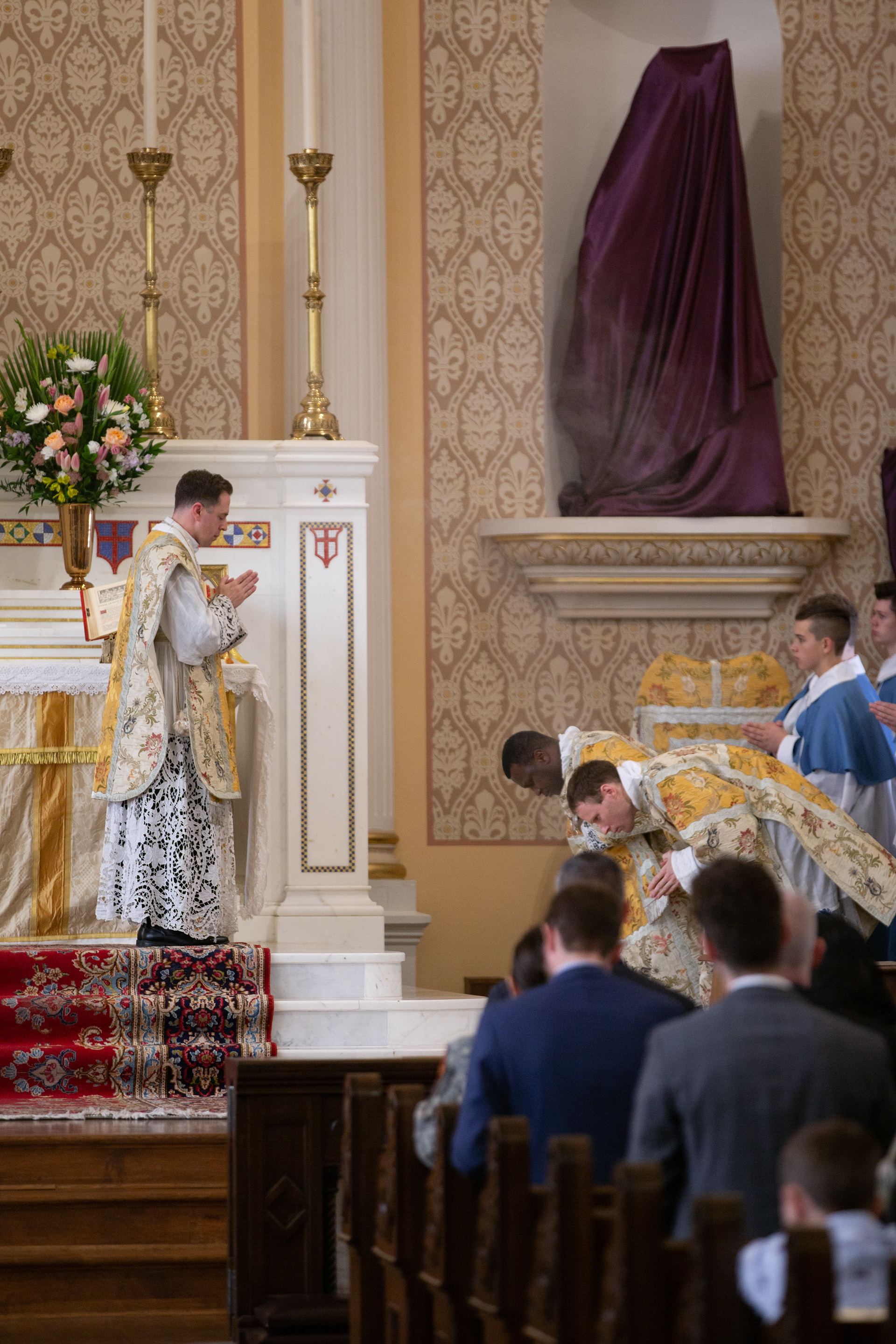
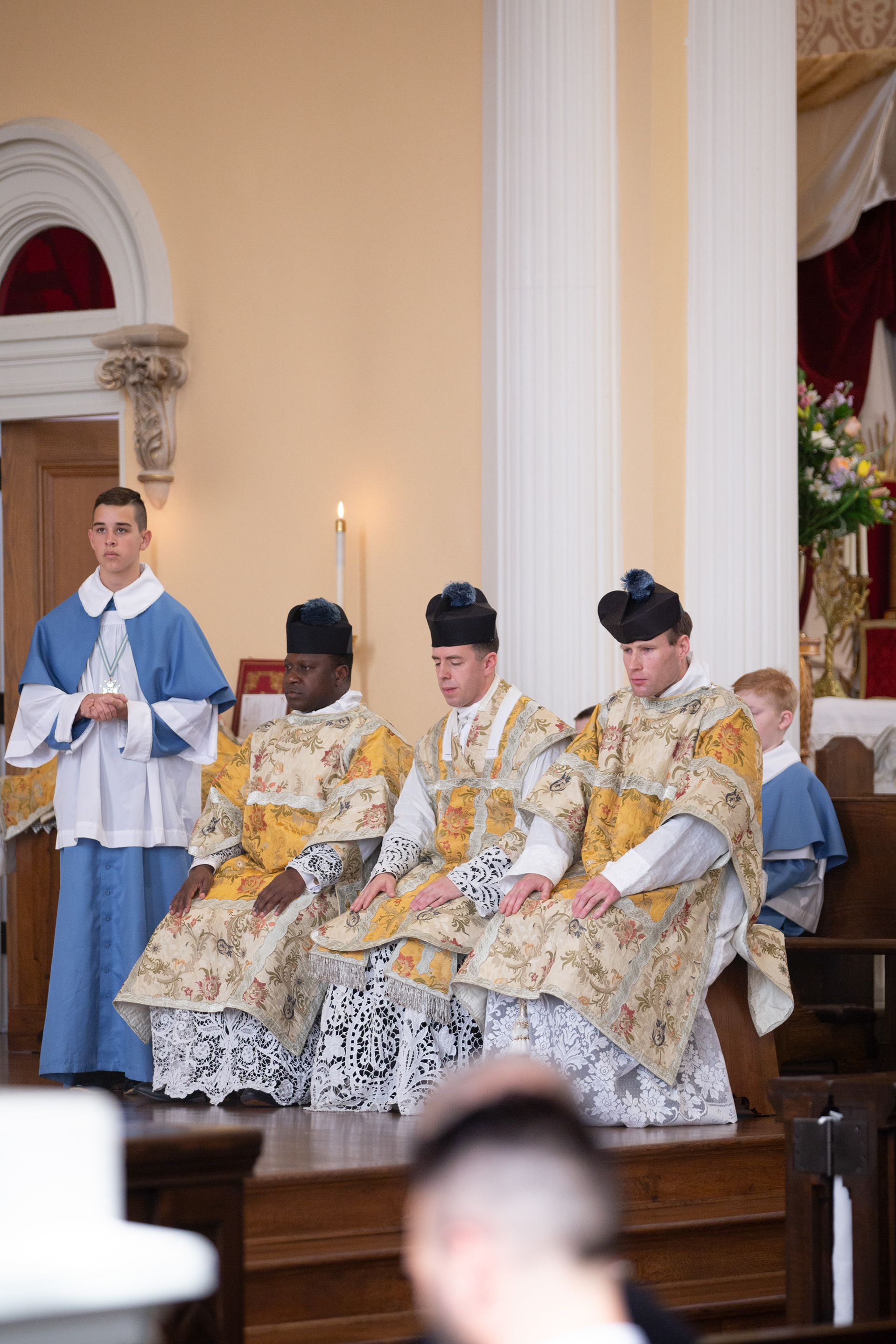
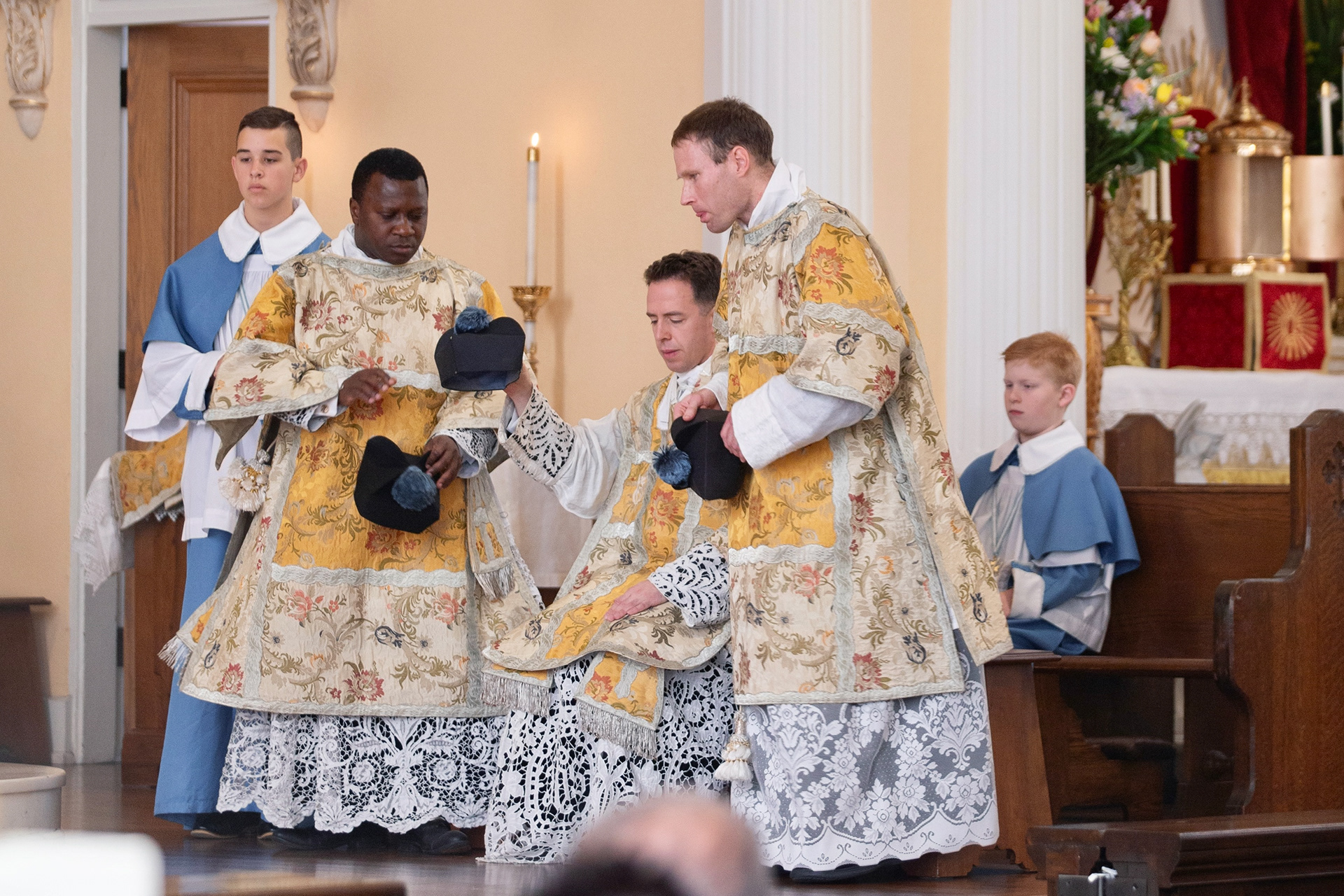
The celebrant intones the Gloria, which has not been heard during Masses of the season for nine weeks.
Every bell from the steeple to the credence table rings and the organ, not played during the season of Lent, is heard for a few moments.
The bells and organ fall silent after this and neither are heard again until the Easter Vigil.
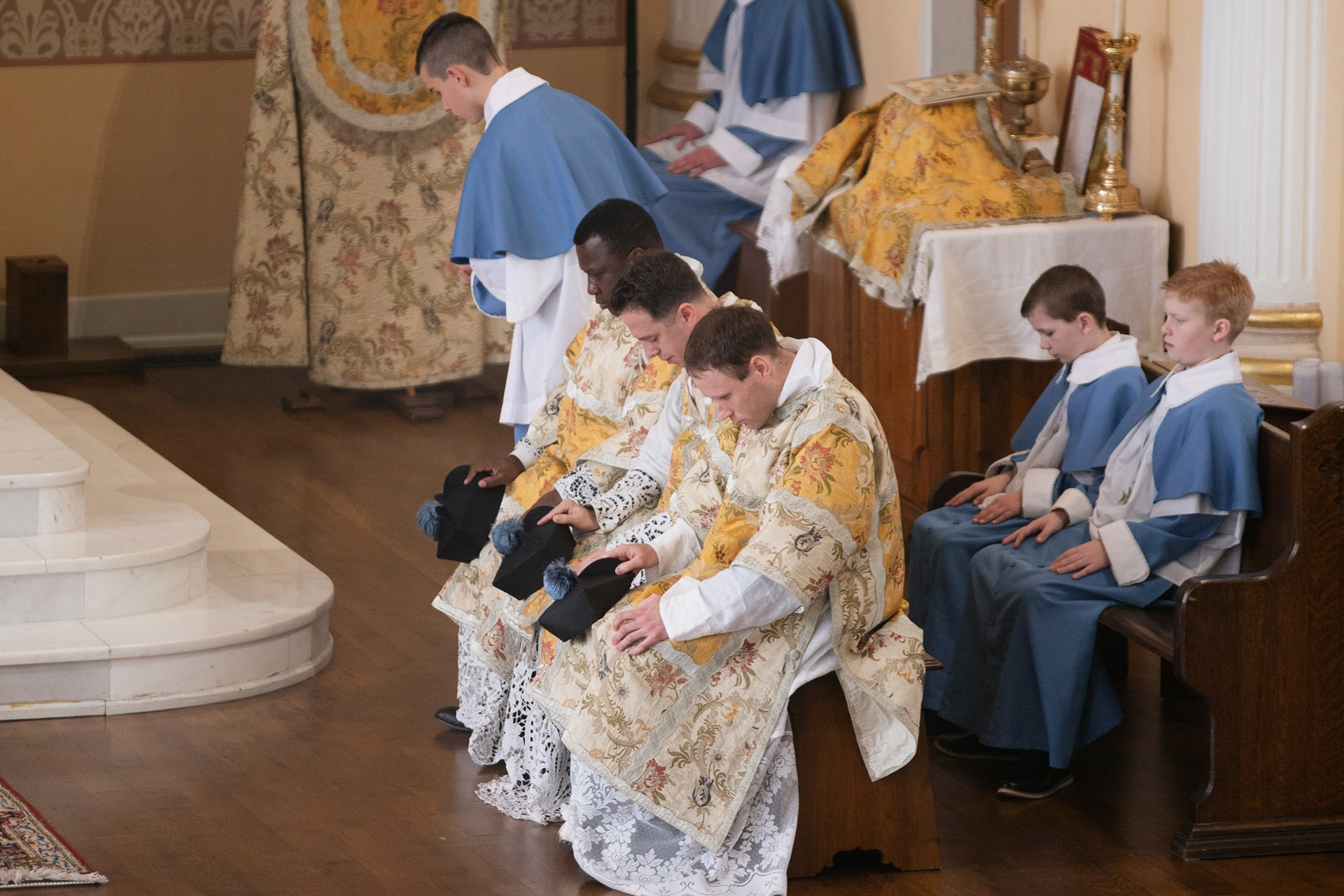
After their spoken recitation of the Gloria, the ministers are seated while the choir continues singing. They remove their birettas at the Name of Jesus and at the line, "súscipe deprecatiónem nostram." (Receive our prayer.)
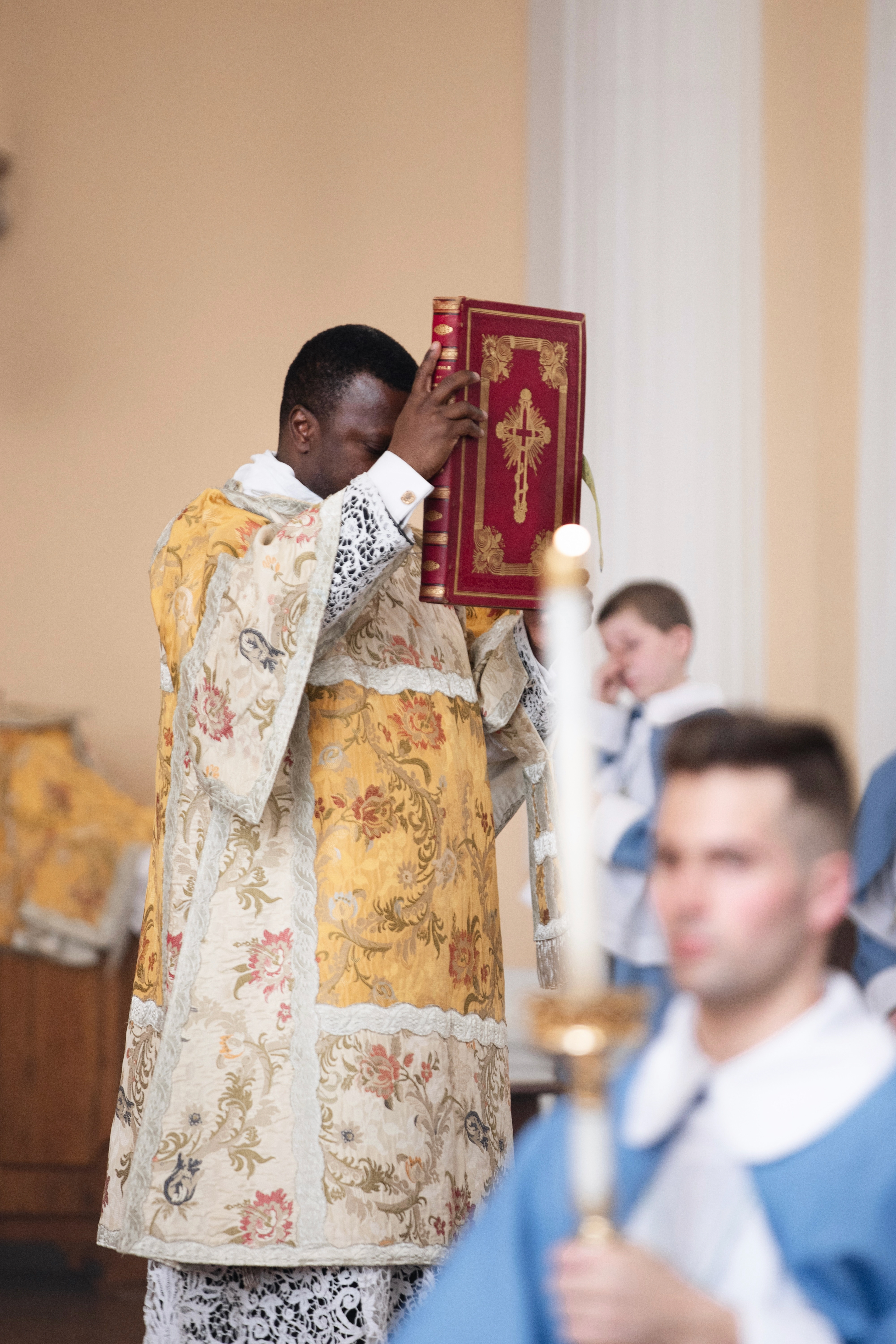
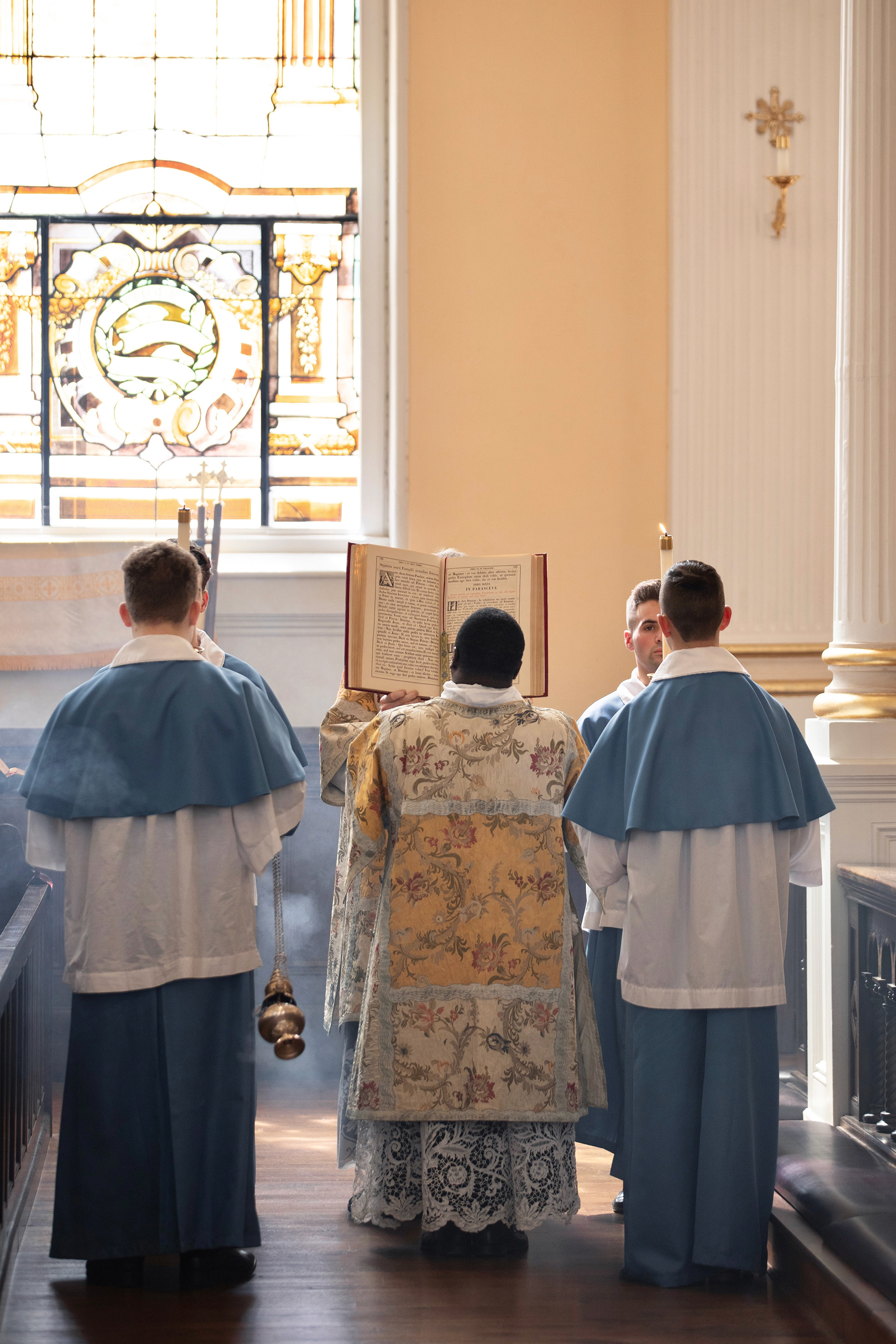
After the Epistle and Tract, the Gospel is read with the usual procession and ceremony.
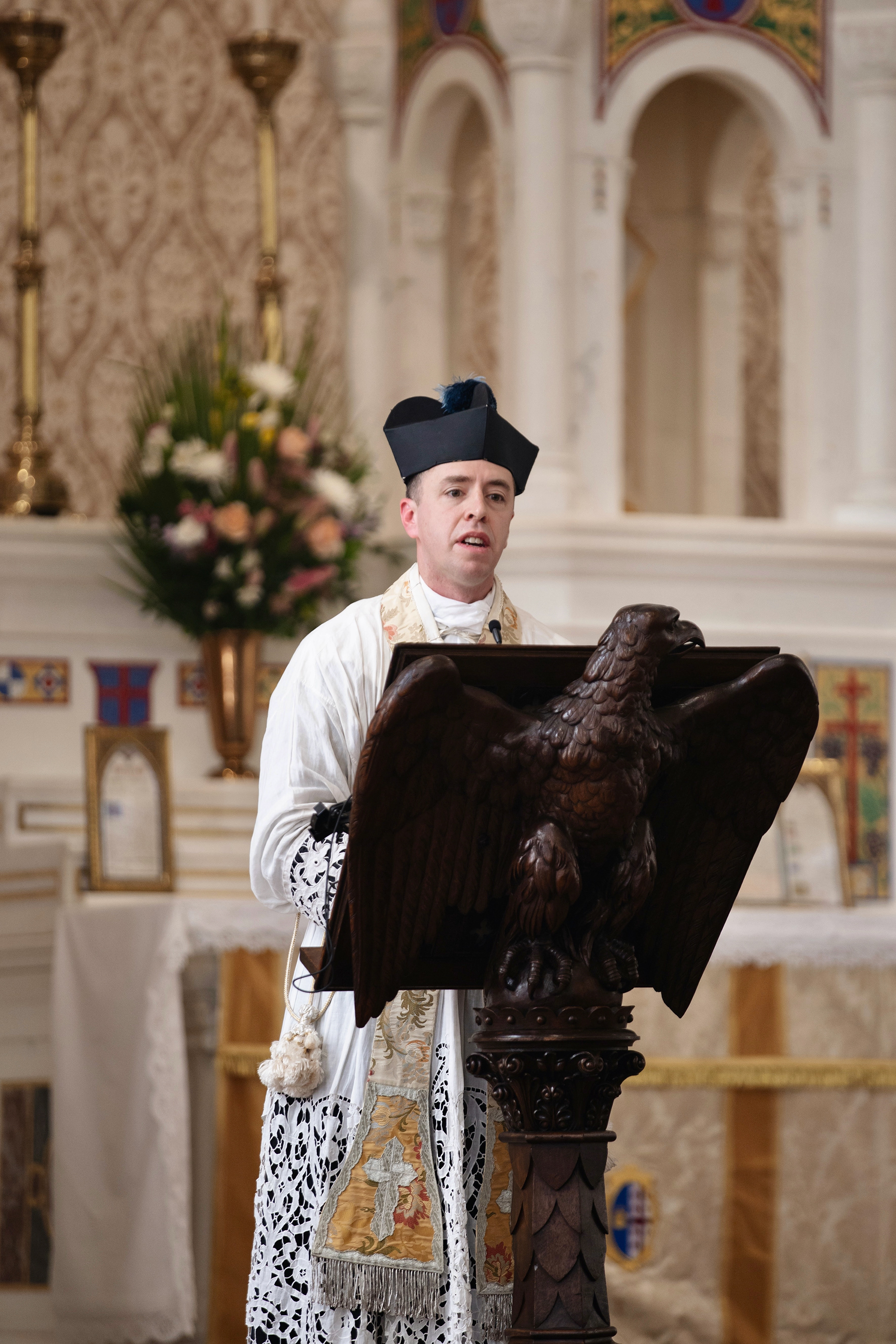
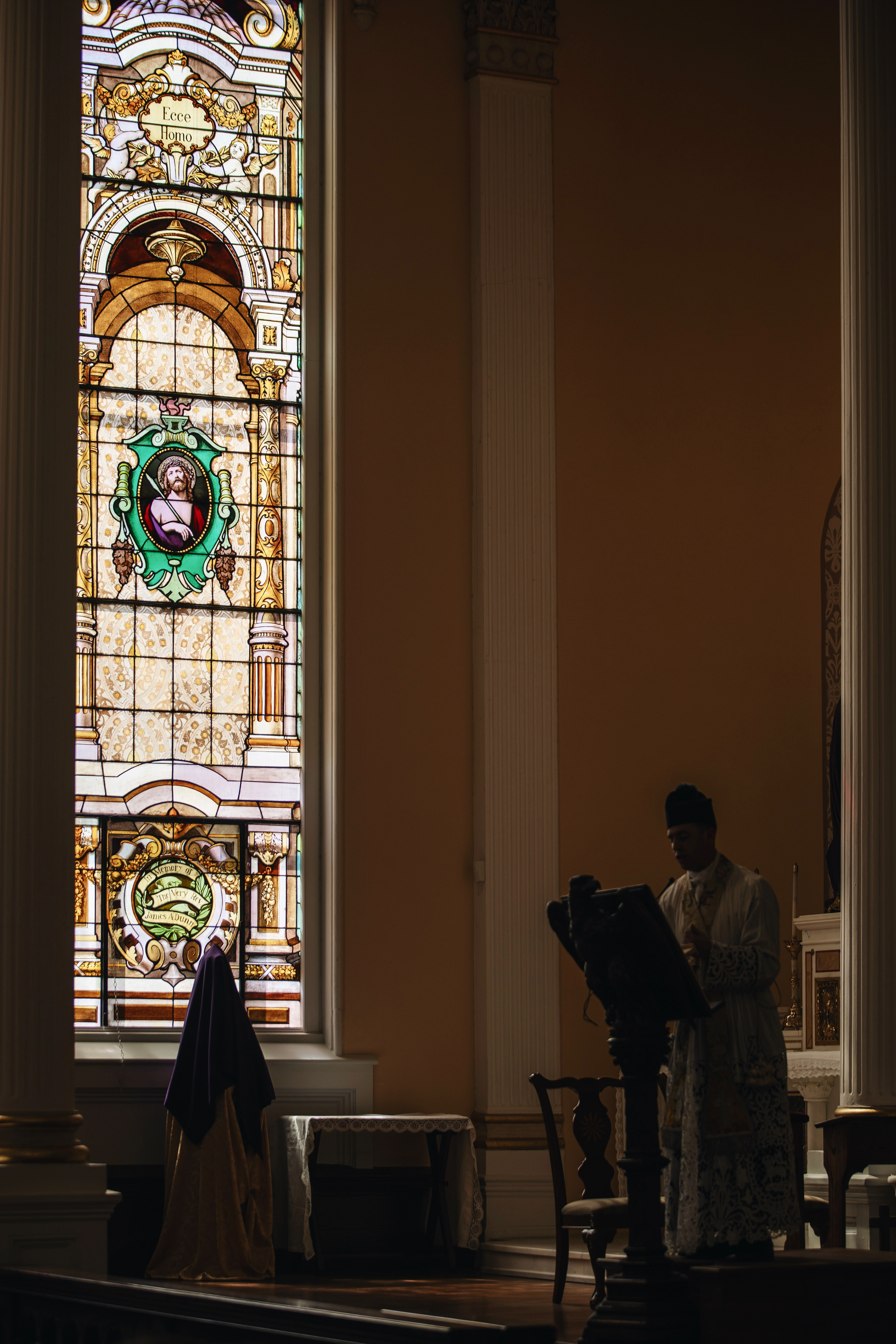
A sermon is given.
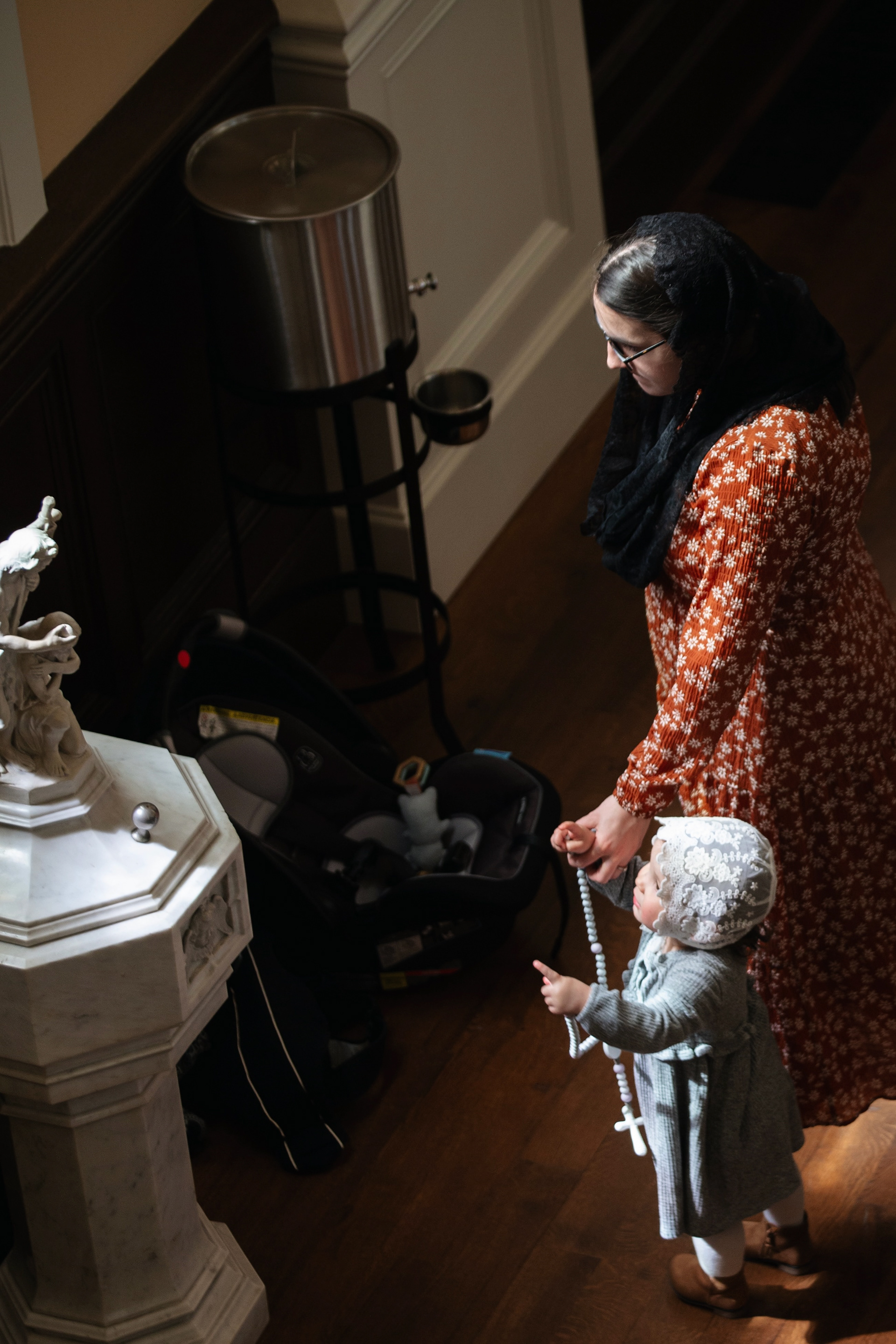
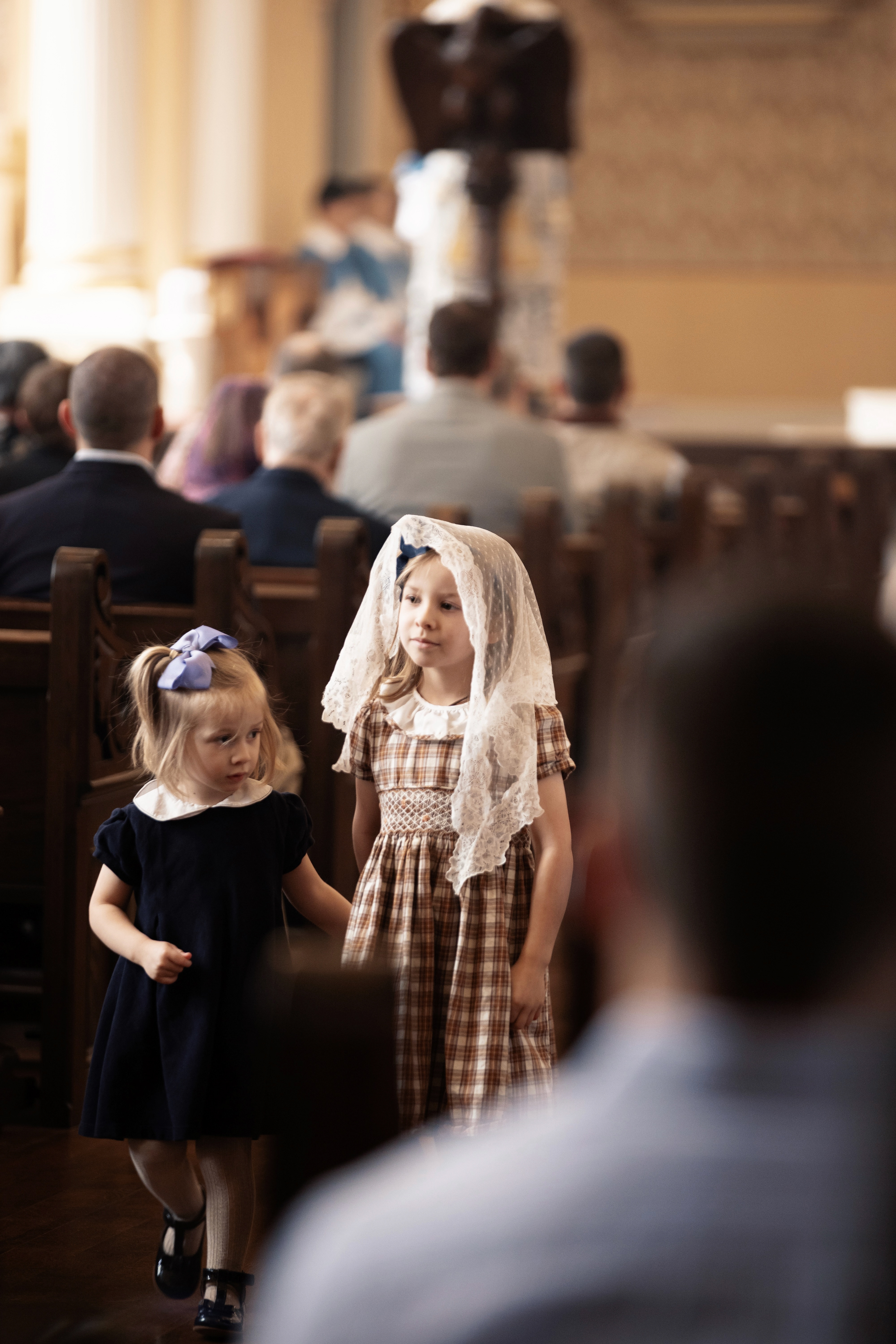
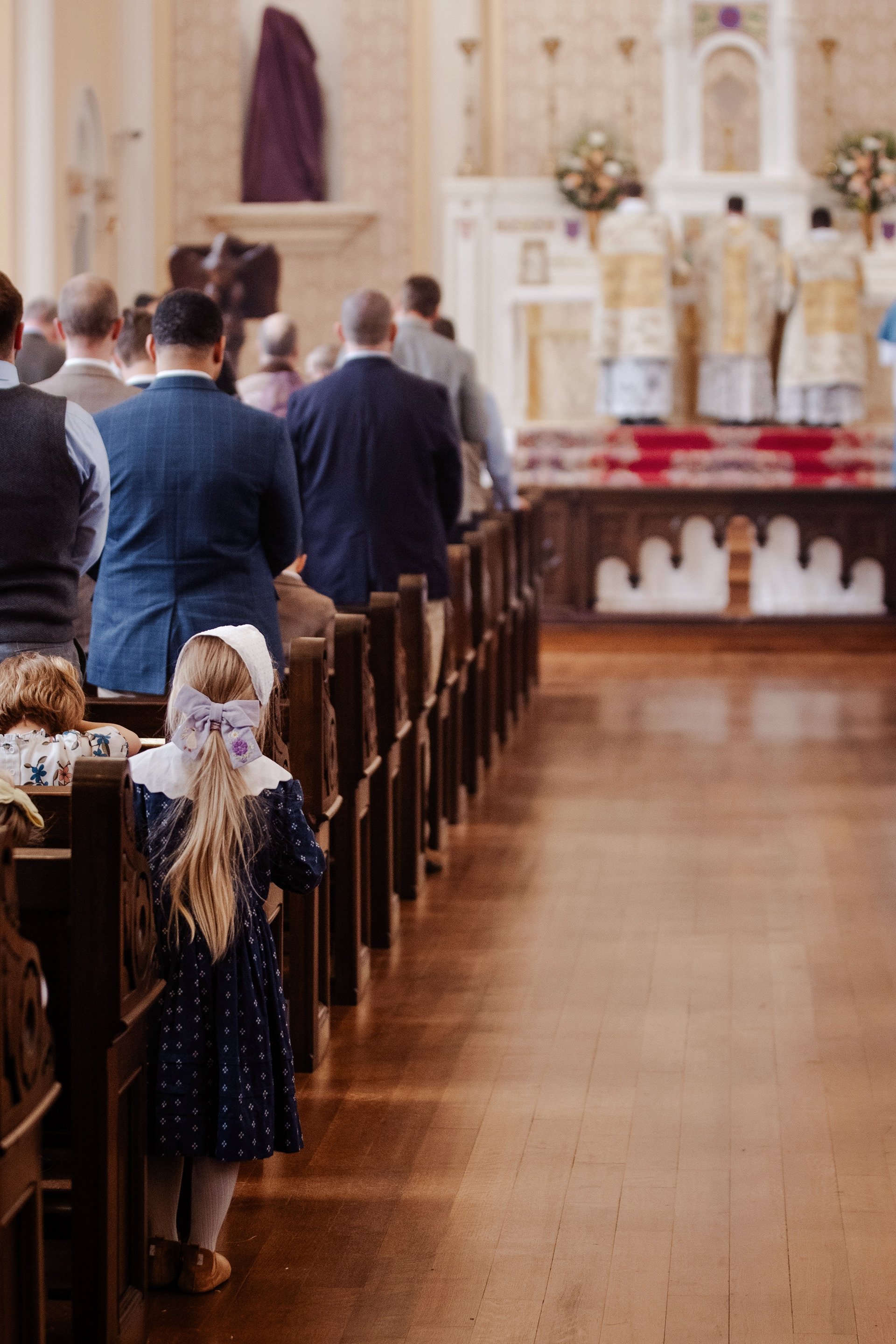
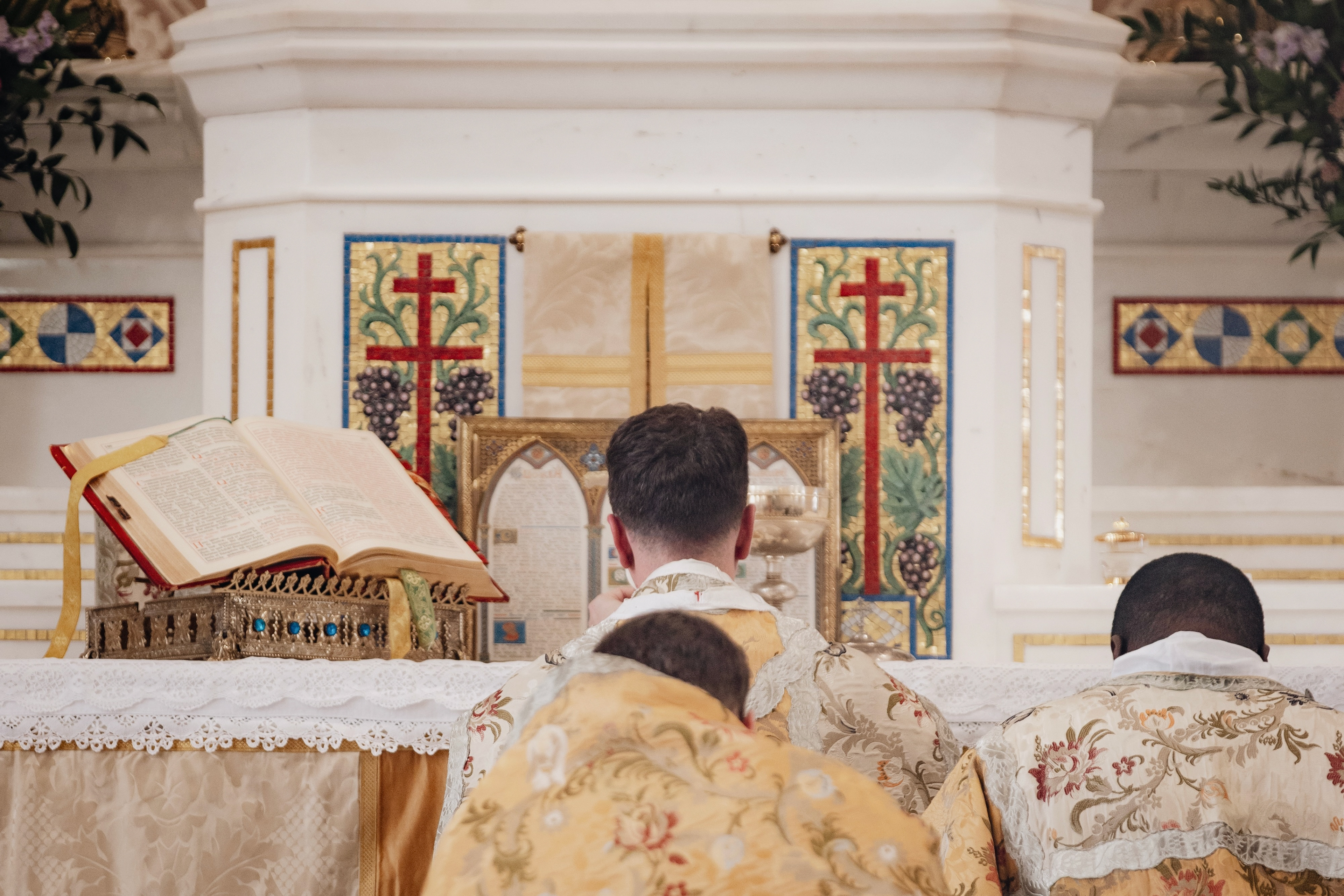
At the consecration, a wooden clapper called a crotalus is used instead of bells.
The Exchange of Peace is omitted after the Pater Noster as an expression of the Church's sadness at the impending death of Christ and her disdain of Judas's kiss of betrayal.
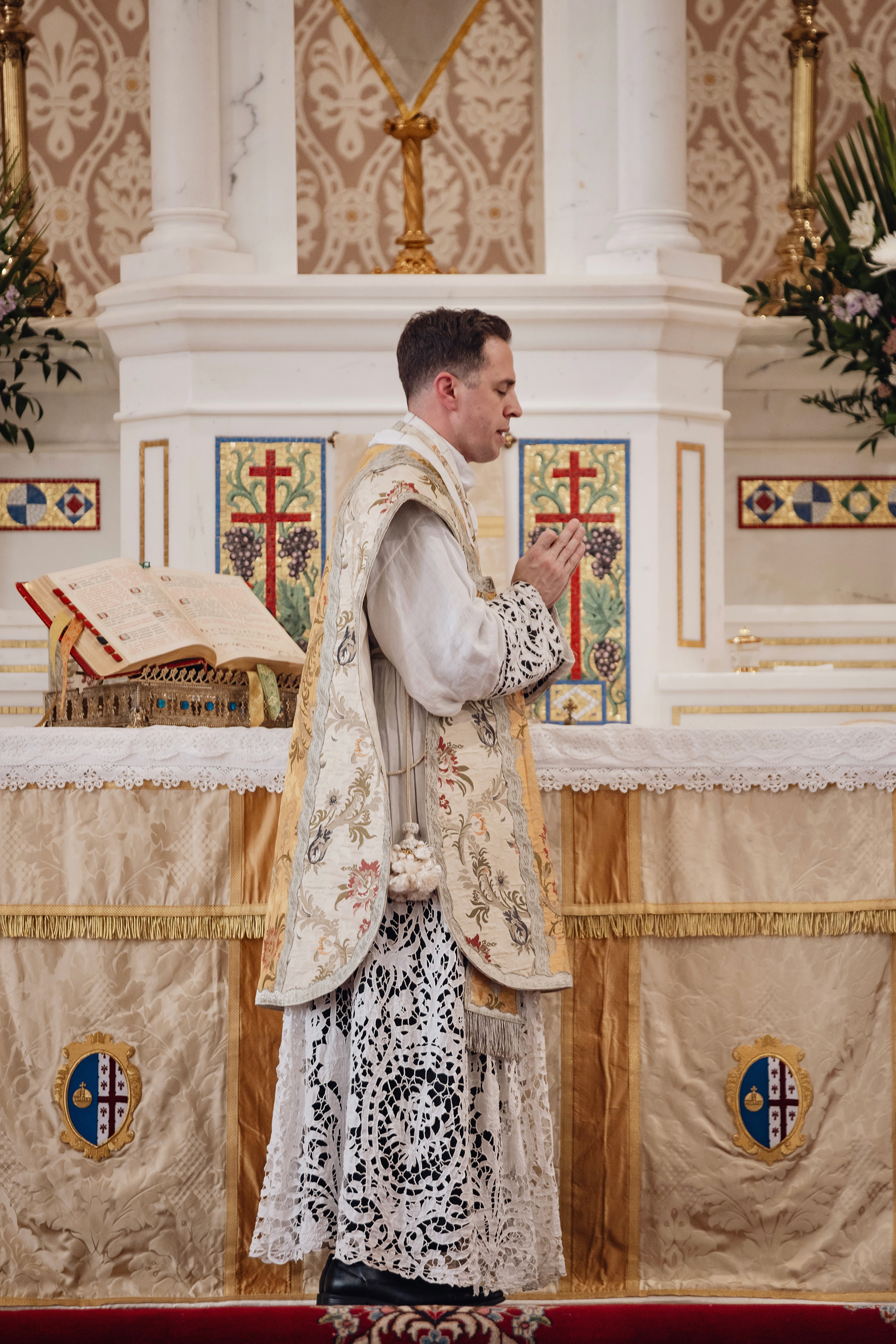
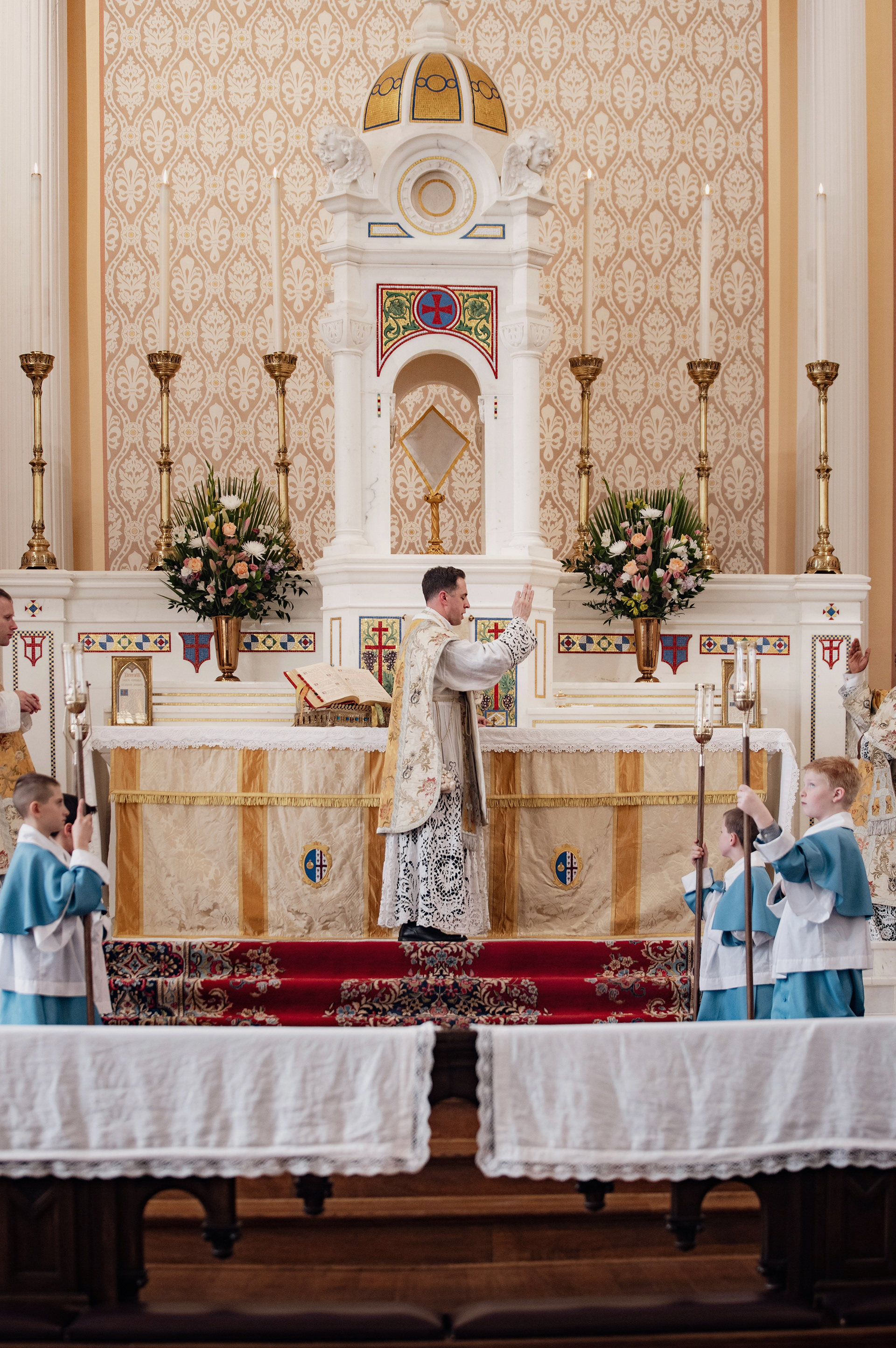
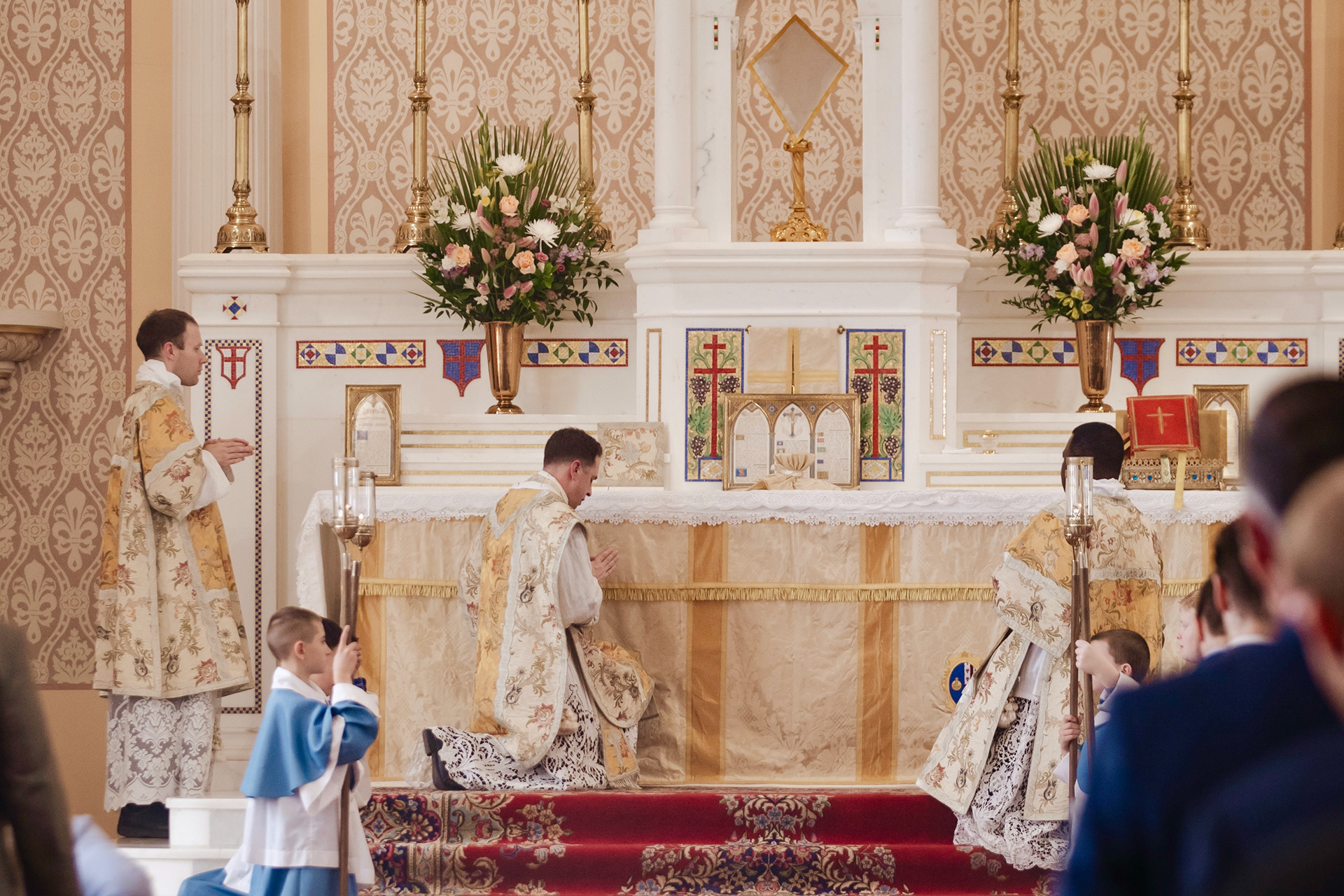
In preparation for the procession, the ciborium is not returned to the tabernacle after Communion. It remains on the altar and during the Last Gospel, at the words, "et Verbum caro factum est" (and the Word was made flesh), the ministers genuflect toward the Word hidden in the ciborium.
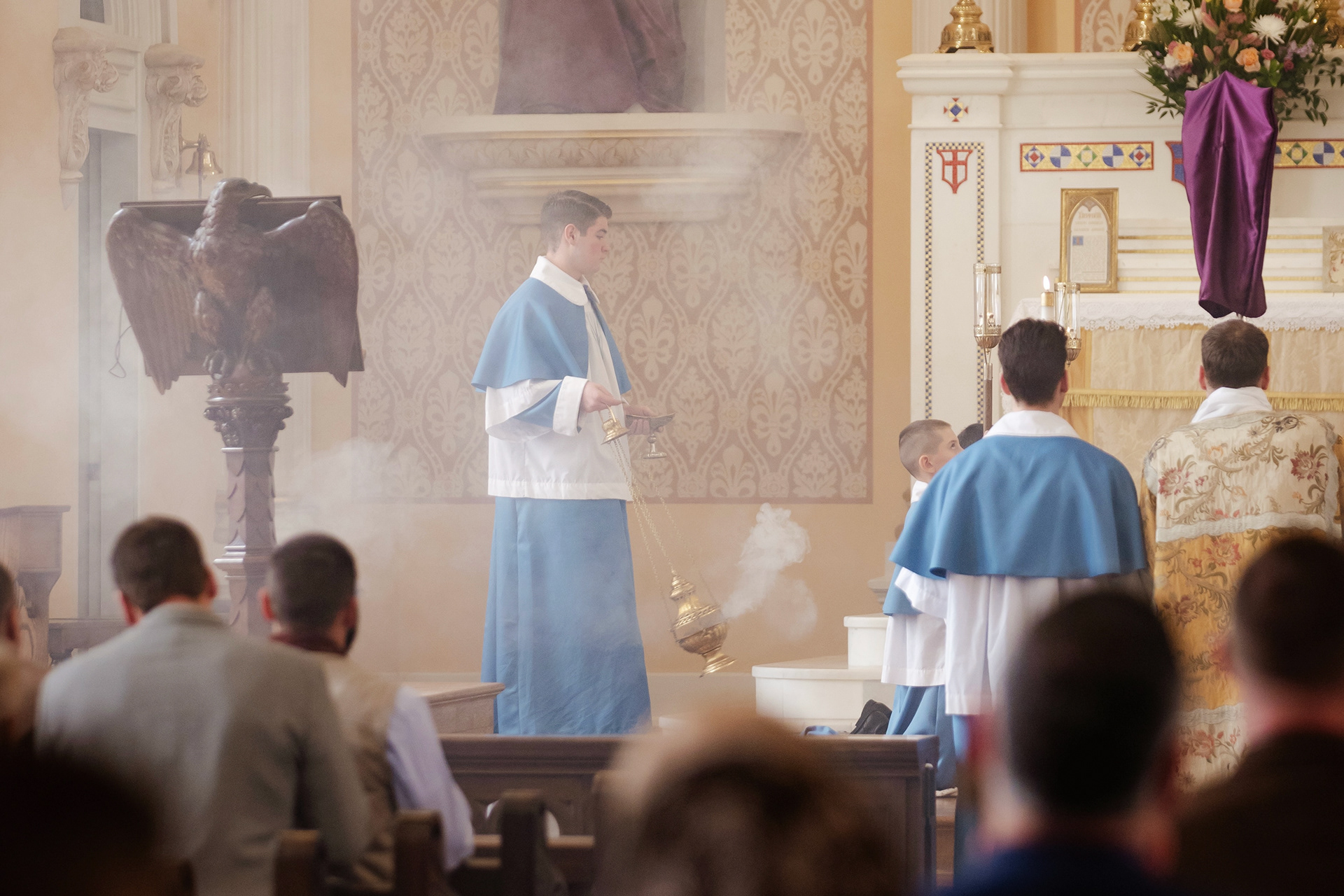
The ciborium is carried in procession to the altar of repose with nearly all the usual marks of reverence: canopy, candles, incense.
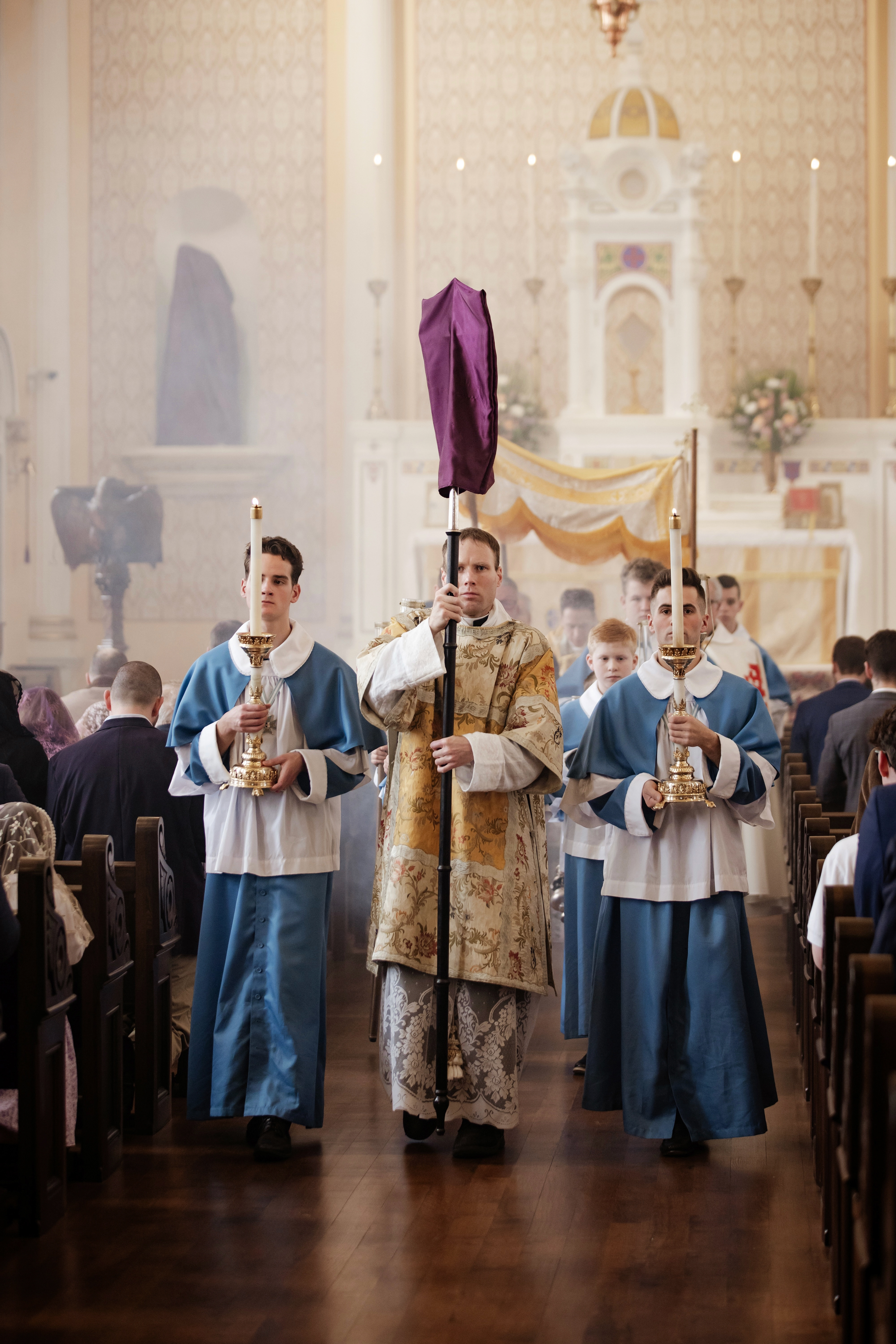
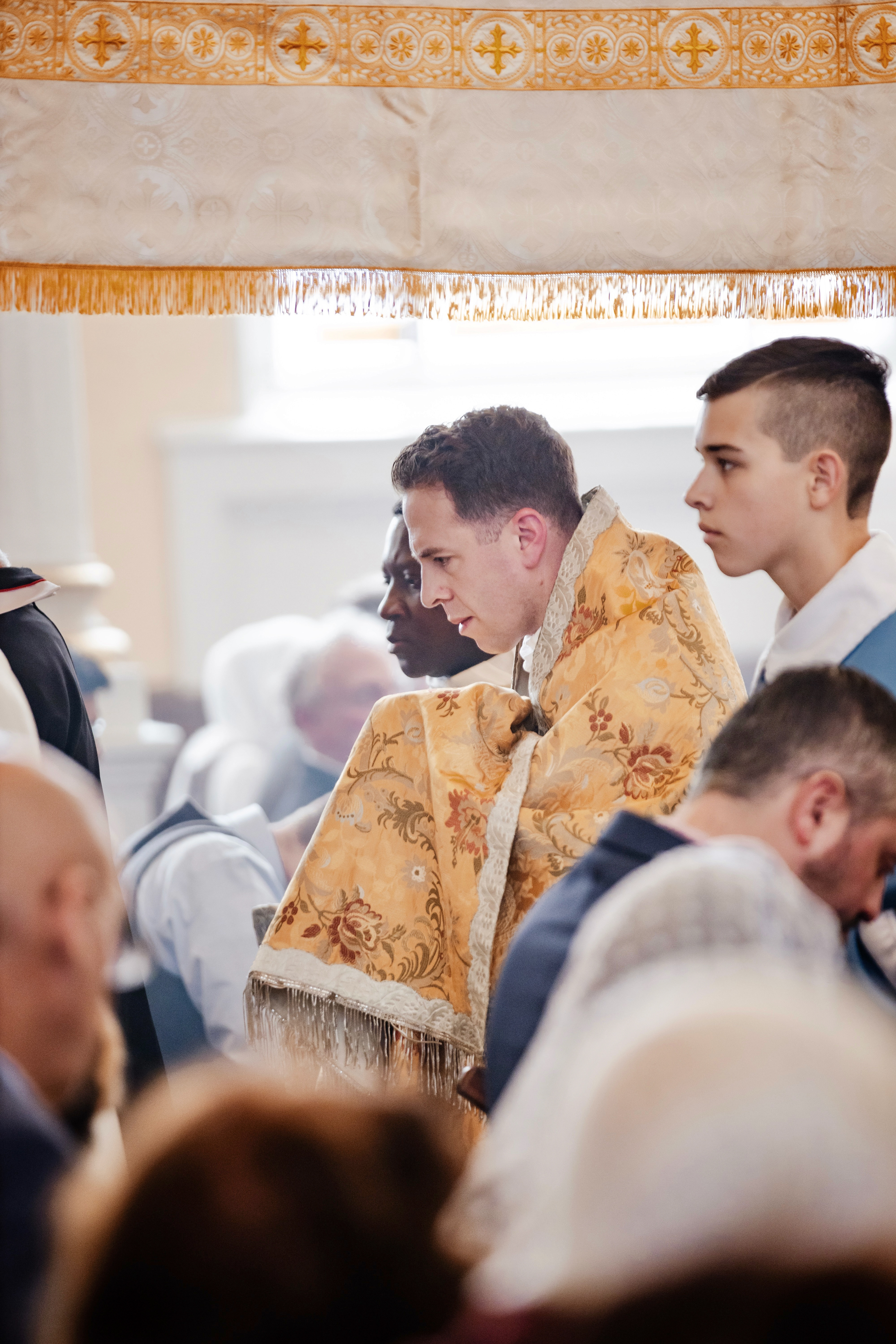
The choir sings the Pange Lingua as Our Lord is carried through the church, hidden under the humeral veil next to the priest's heart.
Crotalus in the server's hand.
The only thing missing in all of this is the bells. Instead, the hammering of the crotalus announces Our Lord's approach, reminding us that this procession is not a normal one and that this is a day of both great joy and profound sorrow.
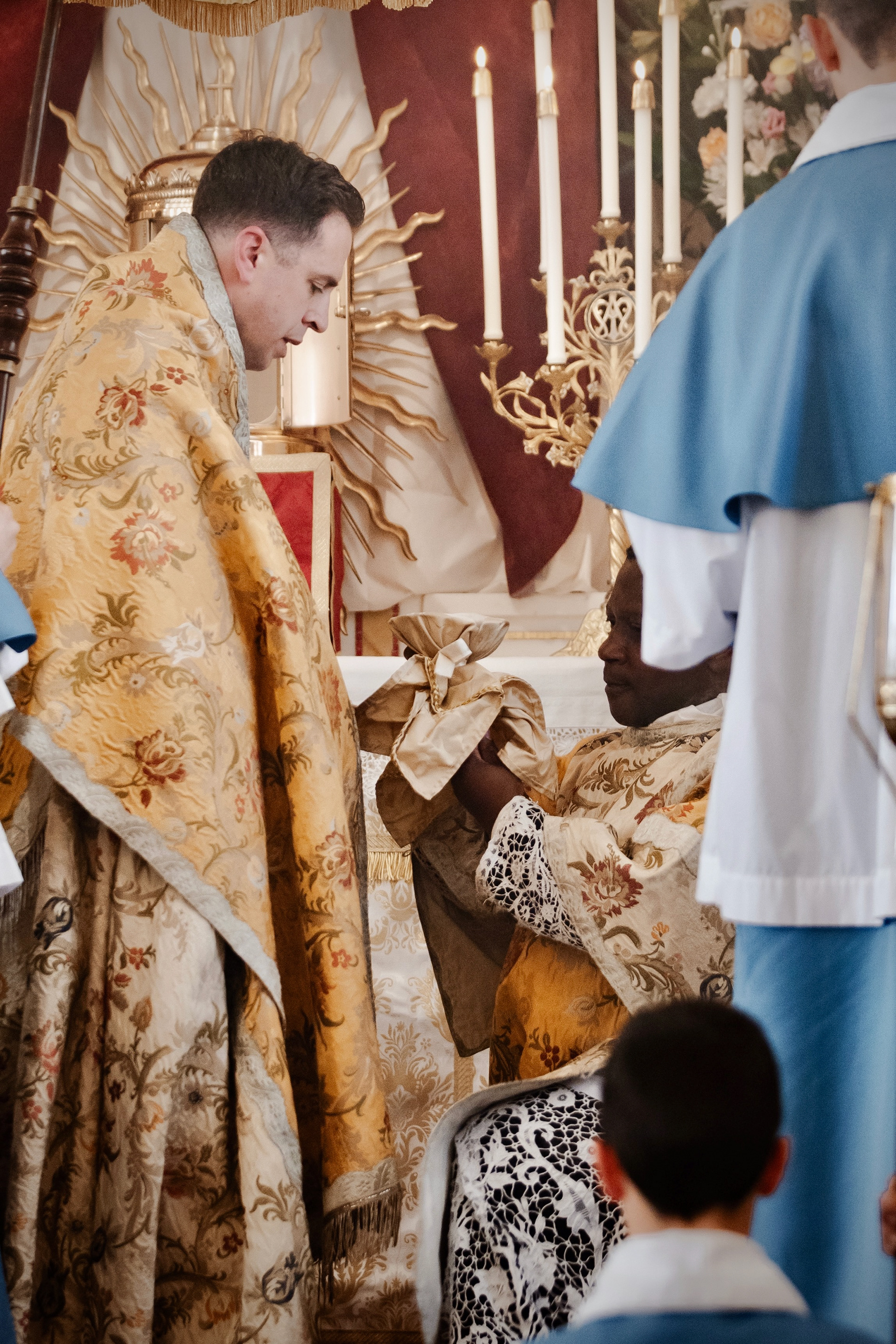
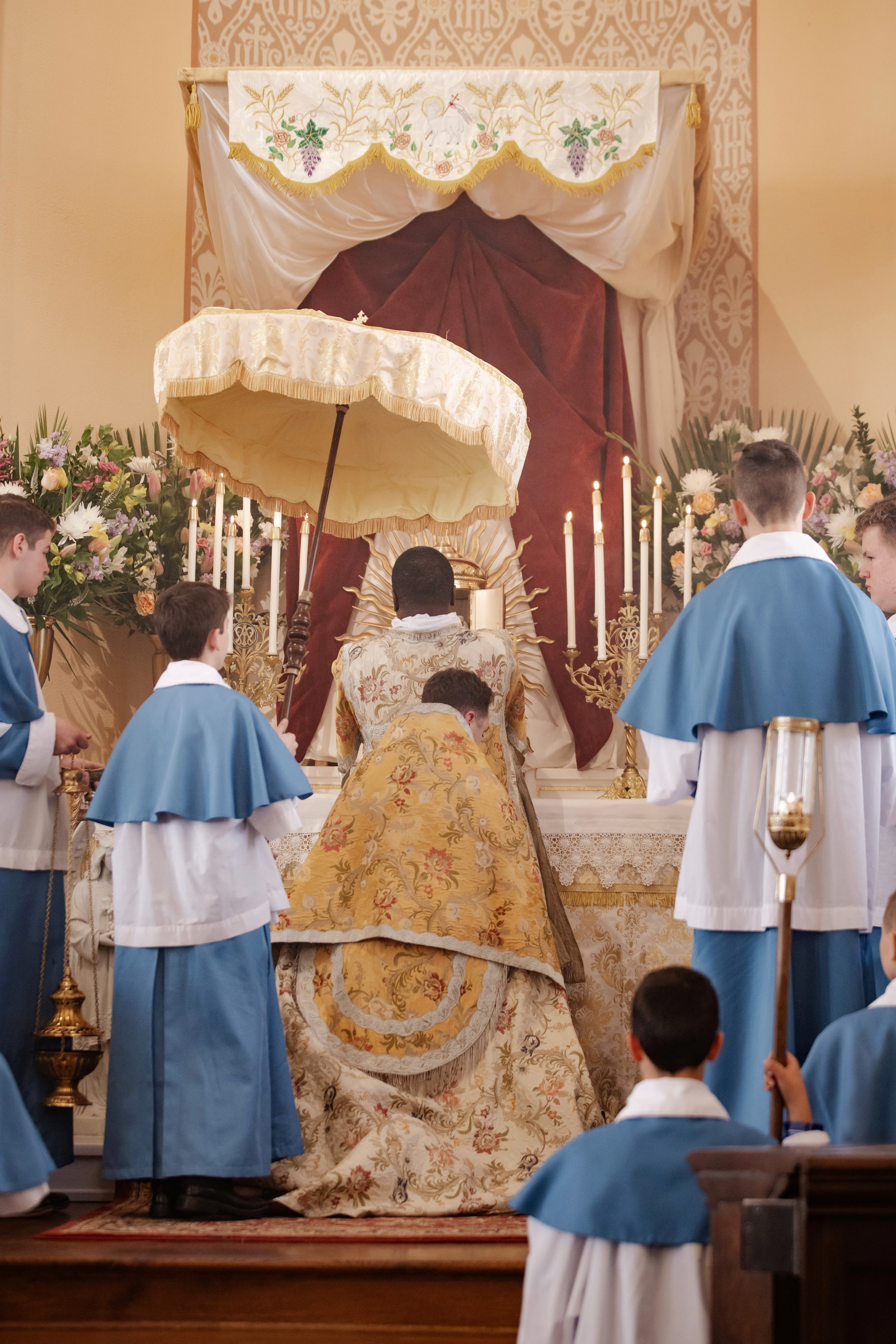
The celebrant gives the ciborium to the deacon, who places it in the tabernacle.
They bow and incense the Holy Eucharist.
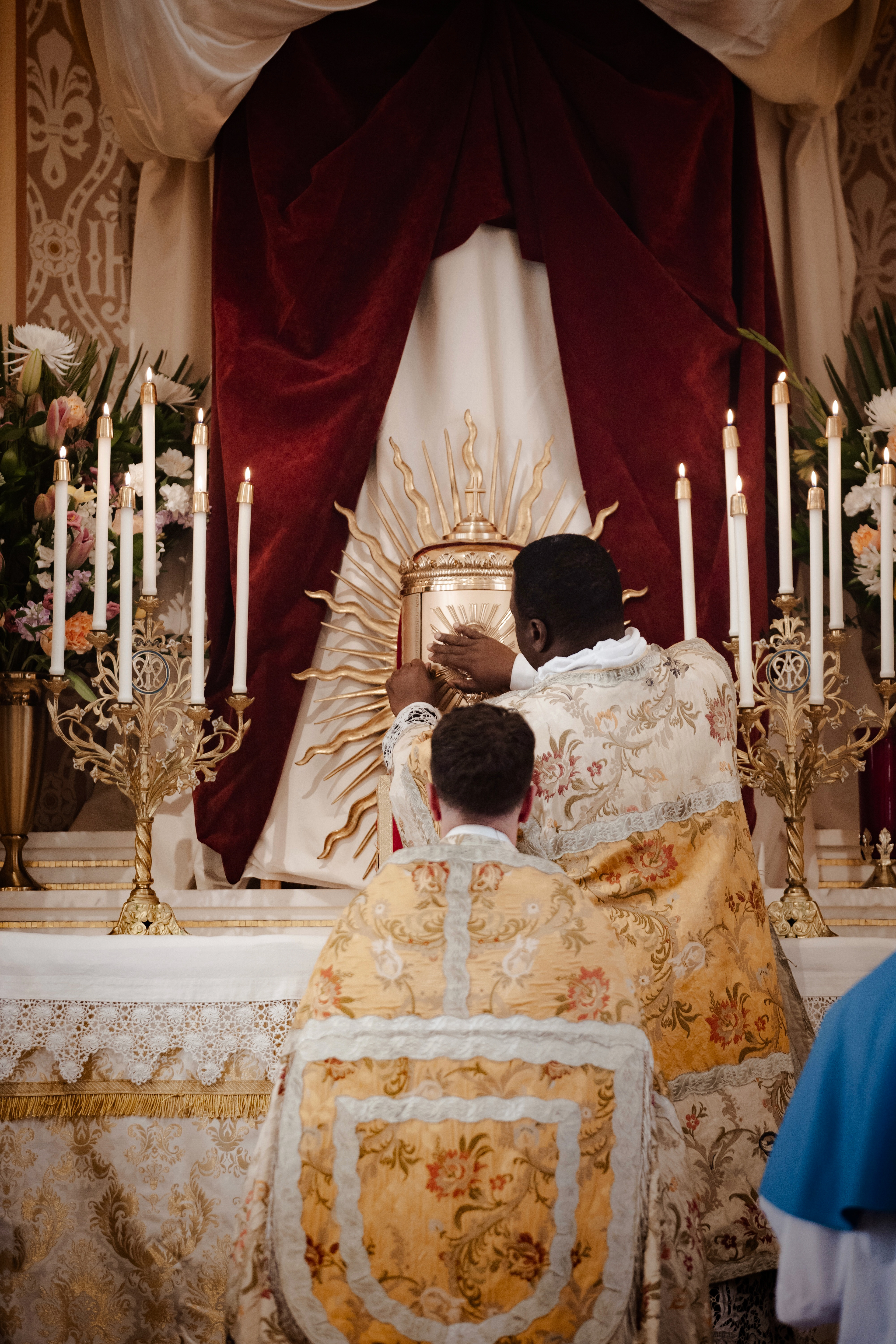
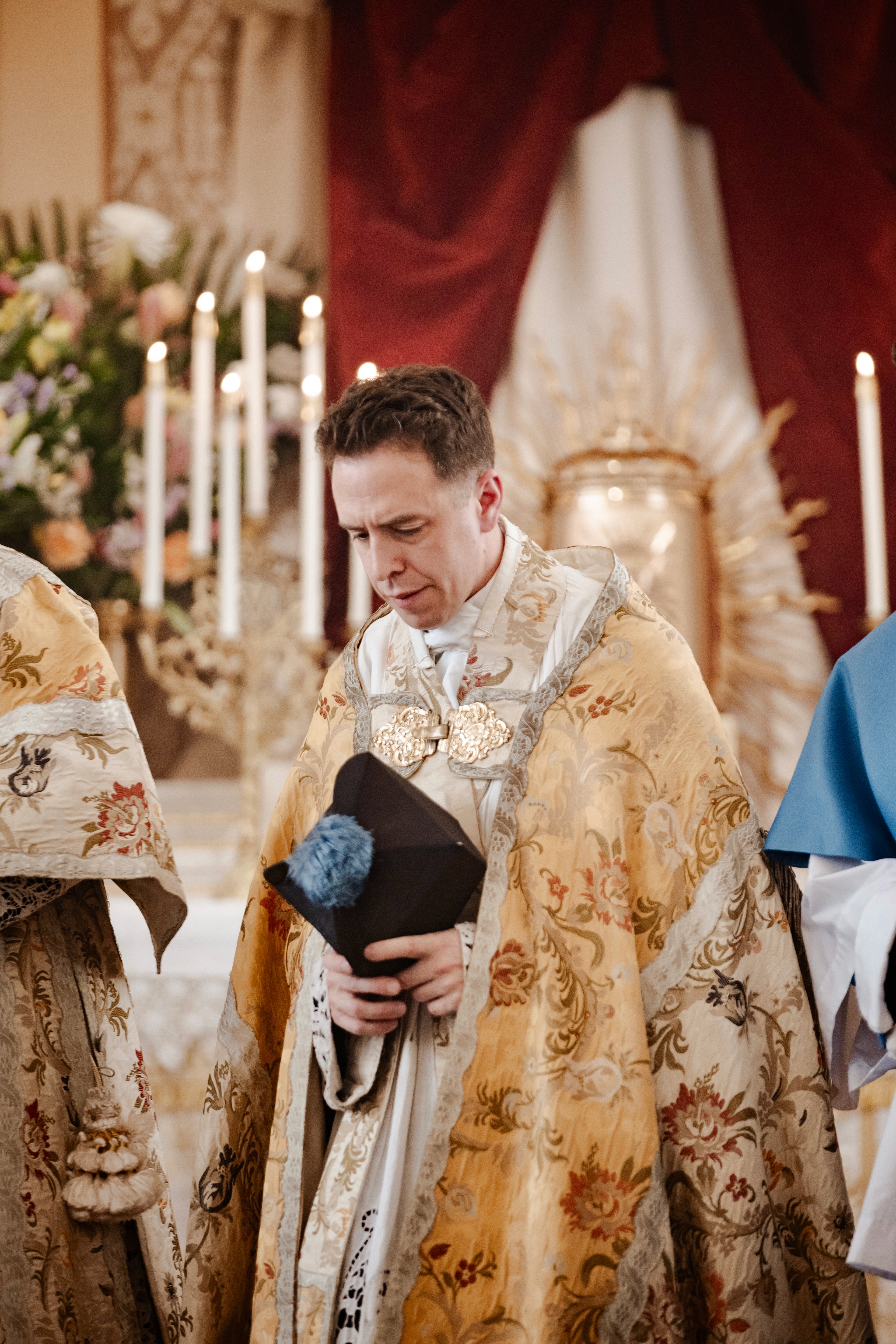
The deacon closes and locks the tabernacle and the procession returns to the sanctuary.
Upon their return tabernacle veil has already been removed, telling us that the tabernacle has lost her Inhabitant.
The church lights are switched off.
*Photography Note:
When I was eight or nine, my father told me about the first Mass we went to as a family on the Sunday after I was adopted. It was a Novus Ordo Mass in China, and they used a Eucharistic Prayer which, before 2011, included the line, “so that from east to west a perfect sacrifice may be made to Your holy Name.” He found a new appreciation for it as he stood in Mass on the other side of the world holding his newly-adopted daughter.
He said, “‘From East to West’ means that the Mass is offered around the world, which means it is being offered at every moment of every day, from sunrise to sunset. There is a consecration happening every minute of every day except for Good Friday. It's the saddest day in the year because we remember Jesus's death and it's the only day without a consecration and He isn't waiting in the tabernacle for you. ”
I saw Triduum differently after that. I hated walking into church on Good Friday and seeing the extinguished sanctuary lamp, the bare altar, and the open tabernacle door. When I was young, in a childish attempt to console myself, I would tell myself that He was just on vacation and would return by Easter.
When I was eight or nine, my father told me about the first Mass we went to as a family on the Sunday after I was adopted. It was a Novus Ordo Mass in China, and they used a Eucharistic Prayer which, before 2011, included the line, “so that from east to west a perfect sacrifice may be made to Your holy Name.” He found a new appreciation for it as he stood in Mass on the other side of the world holding his newly-adopted daughter.
He said, “‘From East to West’ means that the Mass is offered around the world, which means it is being offered at every moment of every day, from sunrise to sunset. There is a consecration happening every minute of every day except for Good Friday. It's the saddest day in the year because we remember Jesus's death and it's the only day without a consecration and He isn't waiting in the tabernacle for you. ”
I saw Triduum differently after that. I hated walking into church on Good Friday and seeing the extinguished sanctuary lamp, the bare altar, and the open tabernacle door. When I was young, in a childish attempt to console myself, I would tell myself that He was just on vacation and would return by Easter.
The One Who can redeem anything turns even the sorrowful, “He is not here” of the tabernacle on Good Friday into the joyful “He is not here!” of the tomb on Easter Sunday, but we miss Him when He isn't there!
I wanted to convey that feeling of loss in the photos of the transition from Holy Thursday to Good Friday. I tried several things, and what felt most natural was to desaturate photos taken after the tabernacle on the altar of repose was locked. The exceptions are photos of the altar of repose and photos of the unveiled Crucifix on Good Friday.
I wanted to convey that feeling of loss in the photos of the transition from Holy Thursday to Good Friday. I tried several things, and what felt most natural was to desaturate photos taken after the tabernacle on the altar of repose was locked. The exceptions are photos of the altar of repose and photos of the unveiled Crucifix on Good Friday.
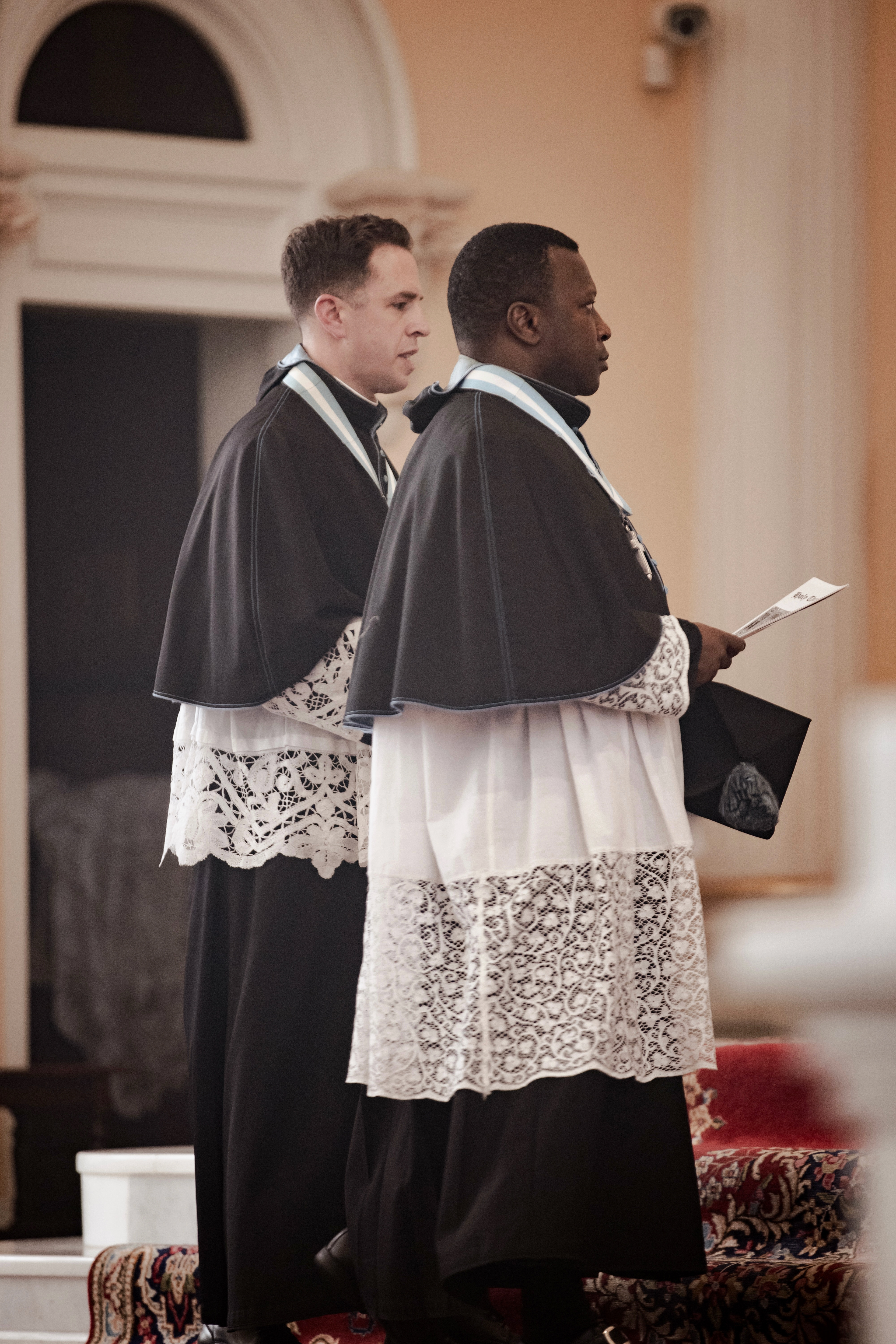
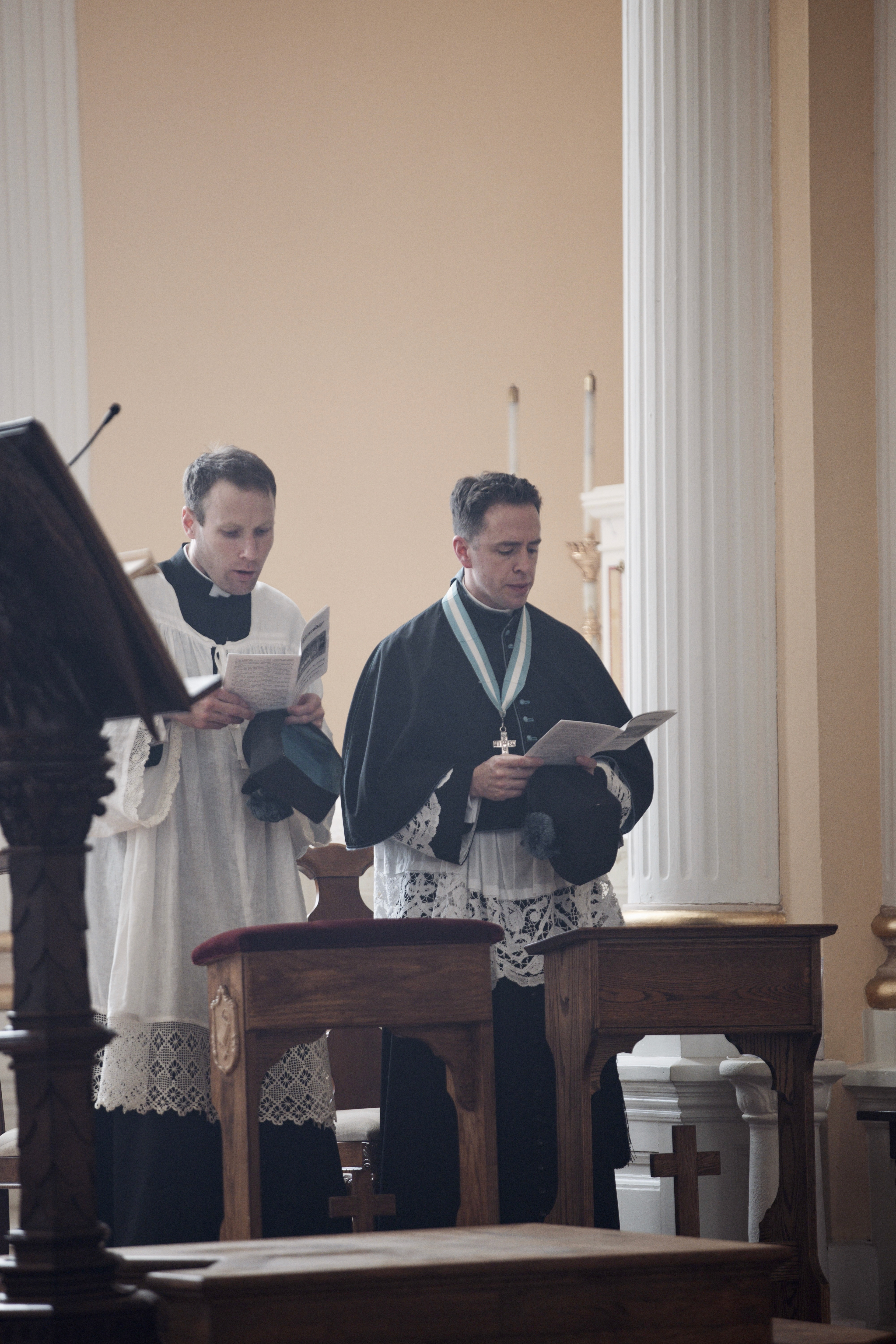
Holy Thursday Mass goes directly into Vespers, sung recto tono (kept tone, or on a fixed pitch); even Psalm tones would be too joyful here.
After Vespers, in one of the most eerie ceremonies of the Church, the choir chants Psalm 22 (DR 21) recto tono as the abandoned altars are stripped.
"They parted My garments amongst them and upon My vesture they cast lots."
Psalm 21:10
Psalm 21:10
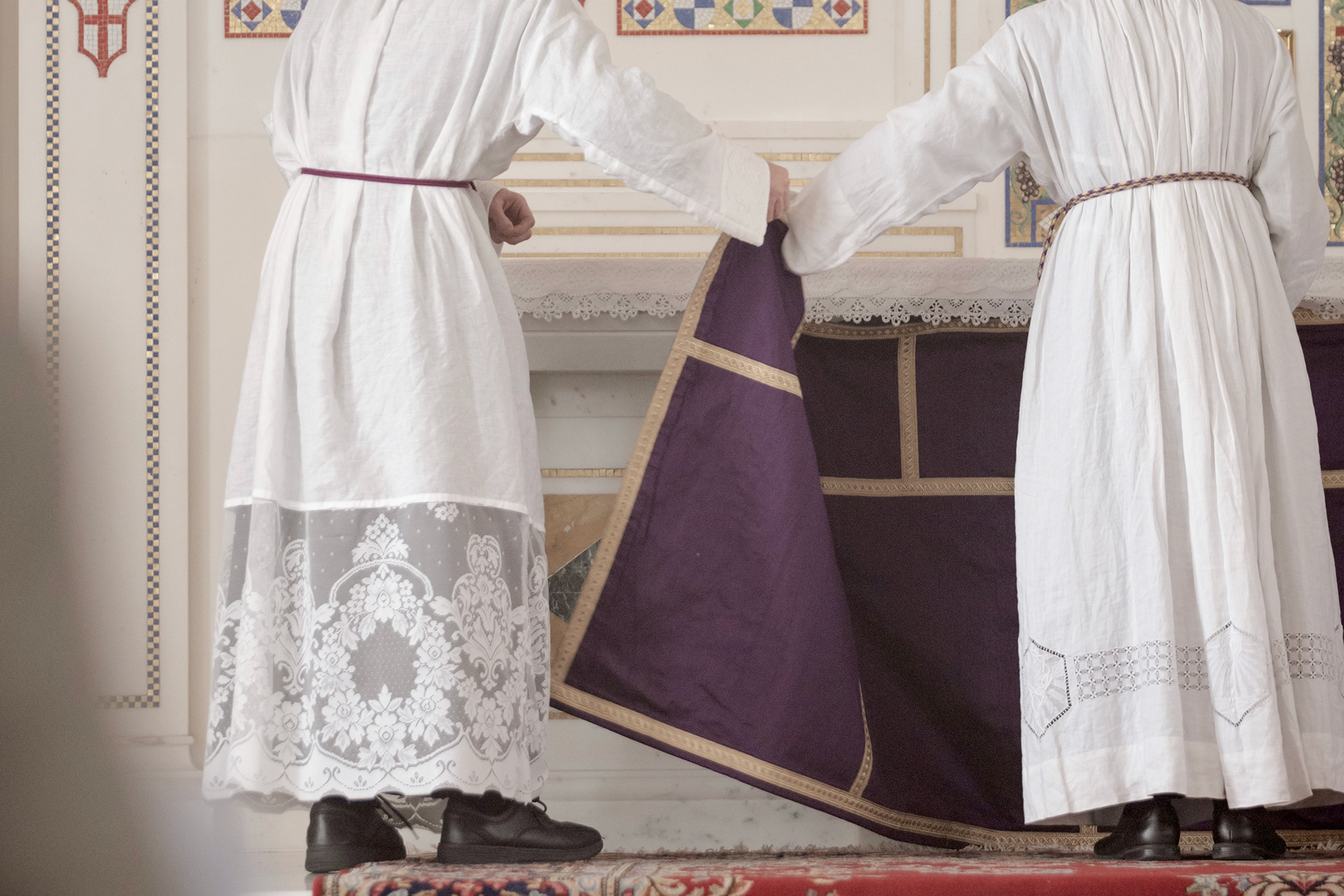
The frontals, altar cloths, and carpets are removed and the holy water fonts are emptied.
"For trouble is near, for there is none to help."
Psalm 21:11
Psalm 21:11
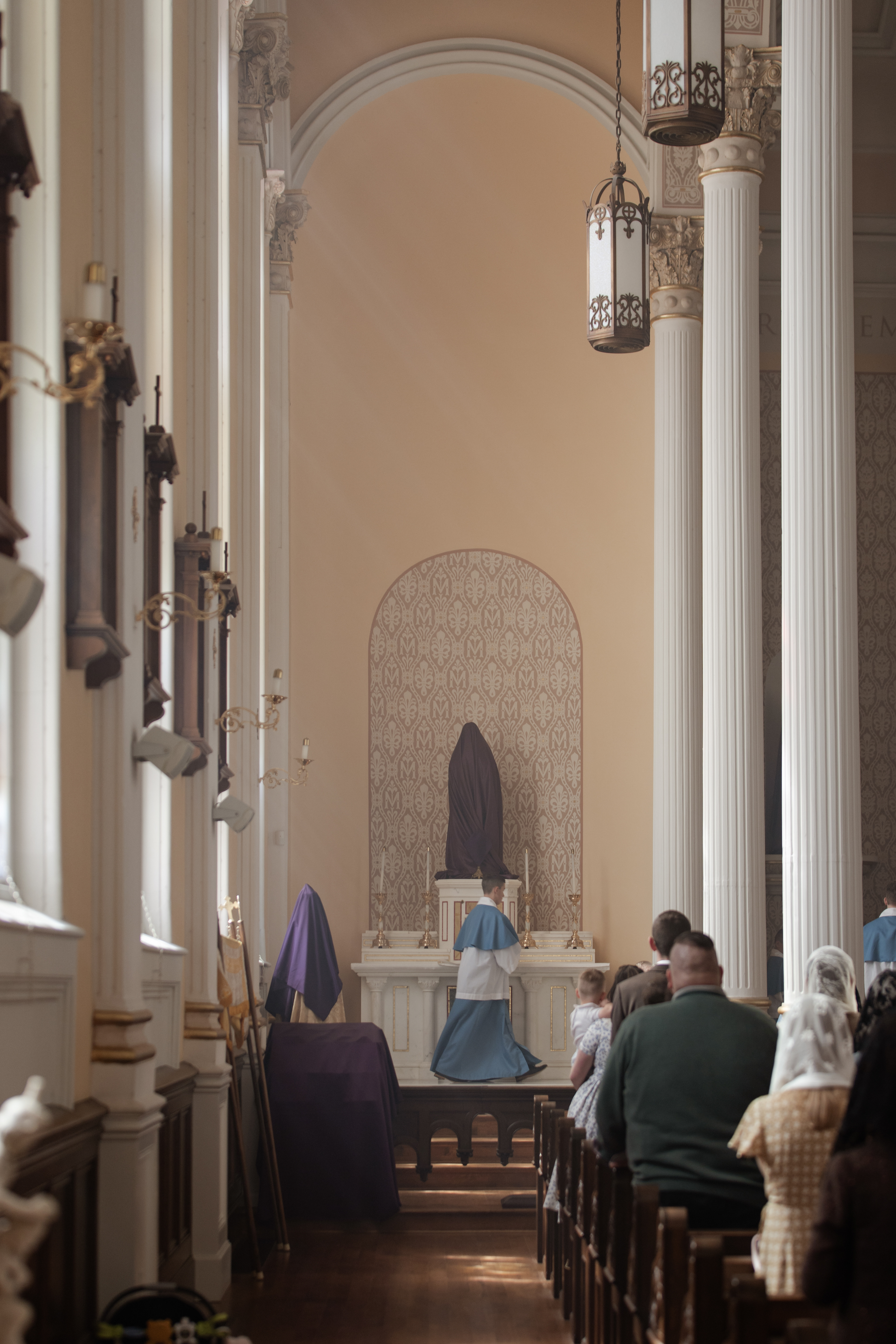
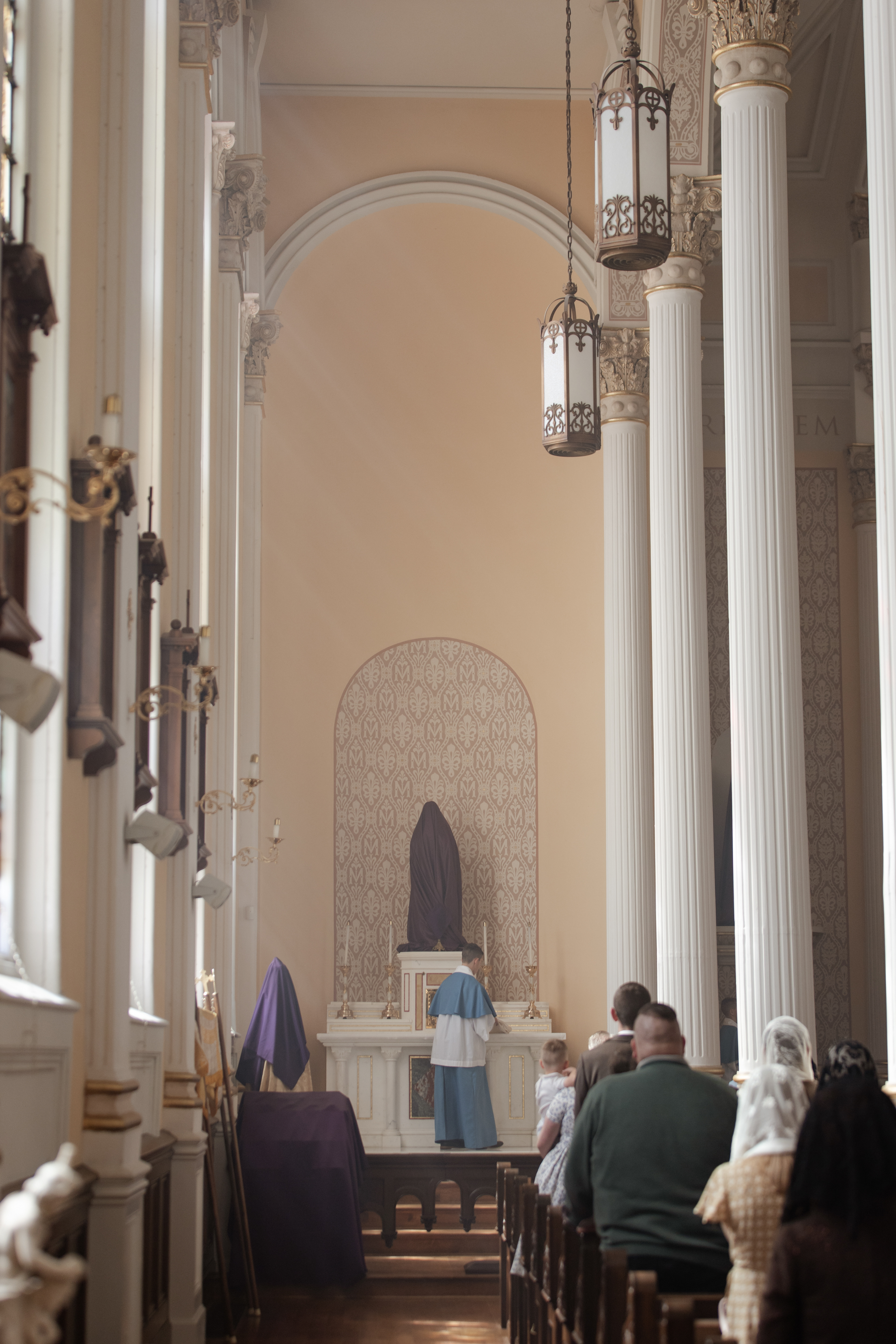
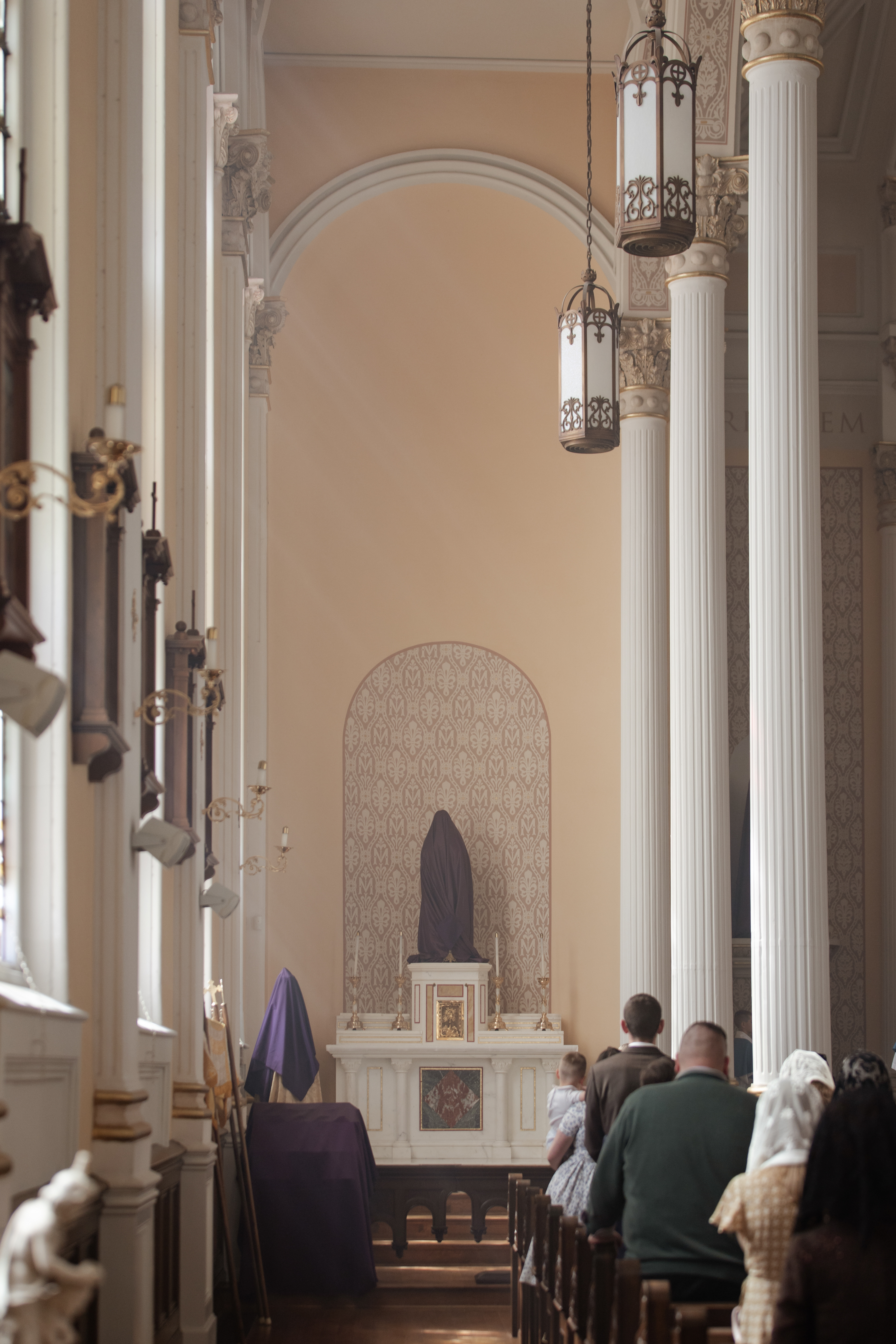
"My strength is dried up like a potsherd and my tongue cleaveth to my jaws, and Thou hast brought me into the dust of death."
Psalm 21:15
Psalm 21:15
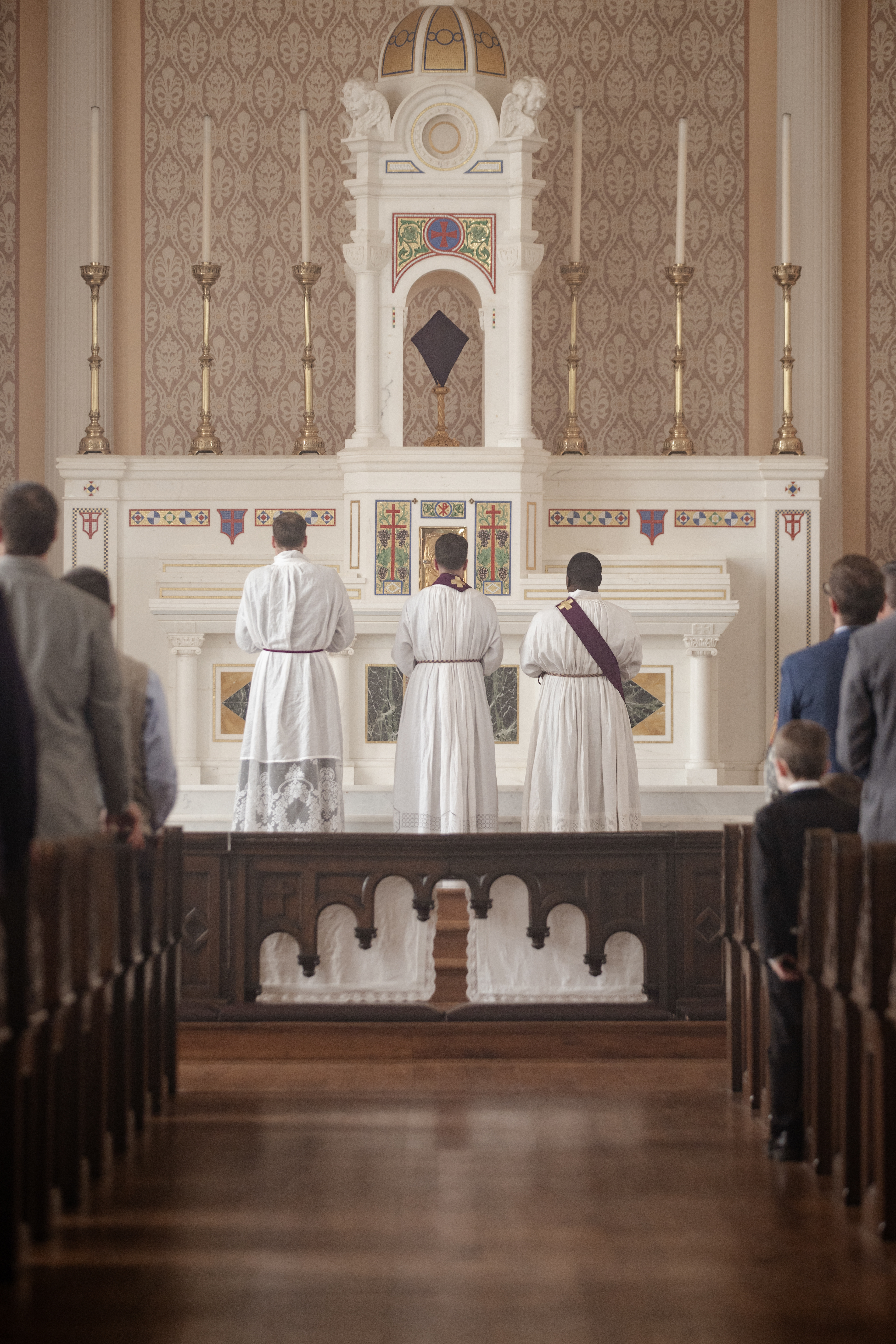
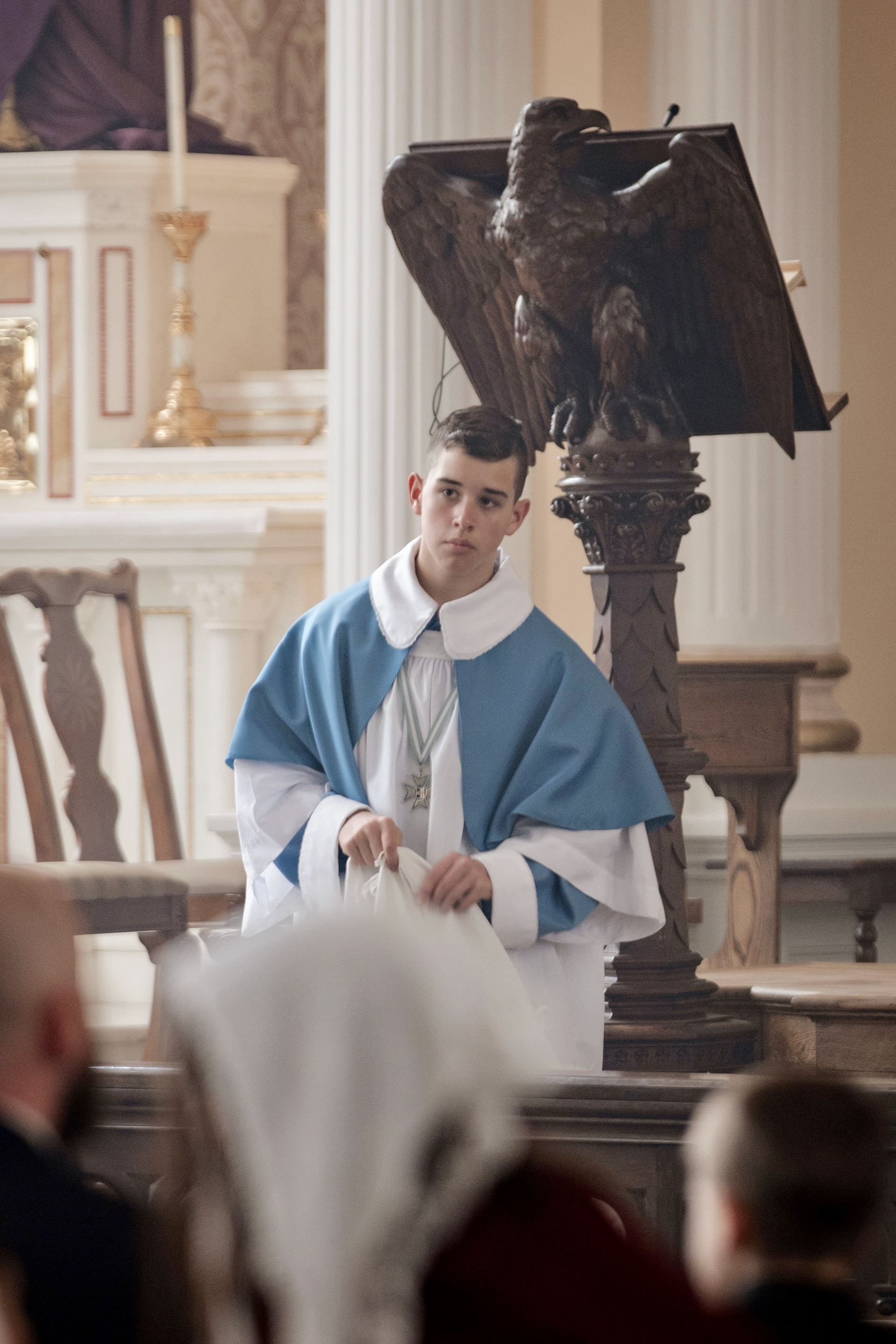
A server removes the houseling cloth from the Communion rail.
The faithful will not receive the Eucharist again until the Easter Vigil.
"My God, my God, look upon me; why hast Thou forsaken me? The voice of mine offenses keepeth Thy deliverance far from me."
Psalm 21:1
Psalm 21:1
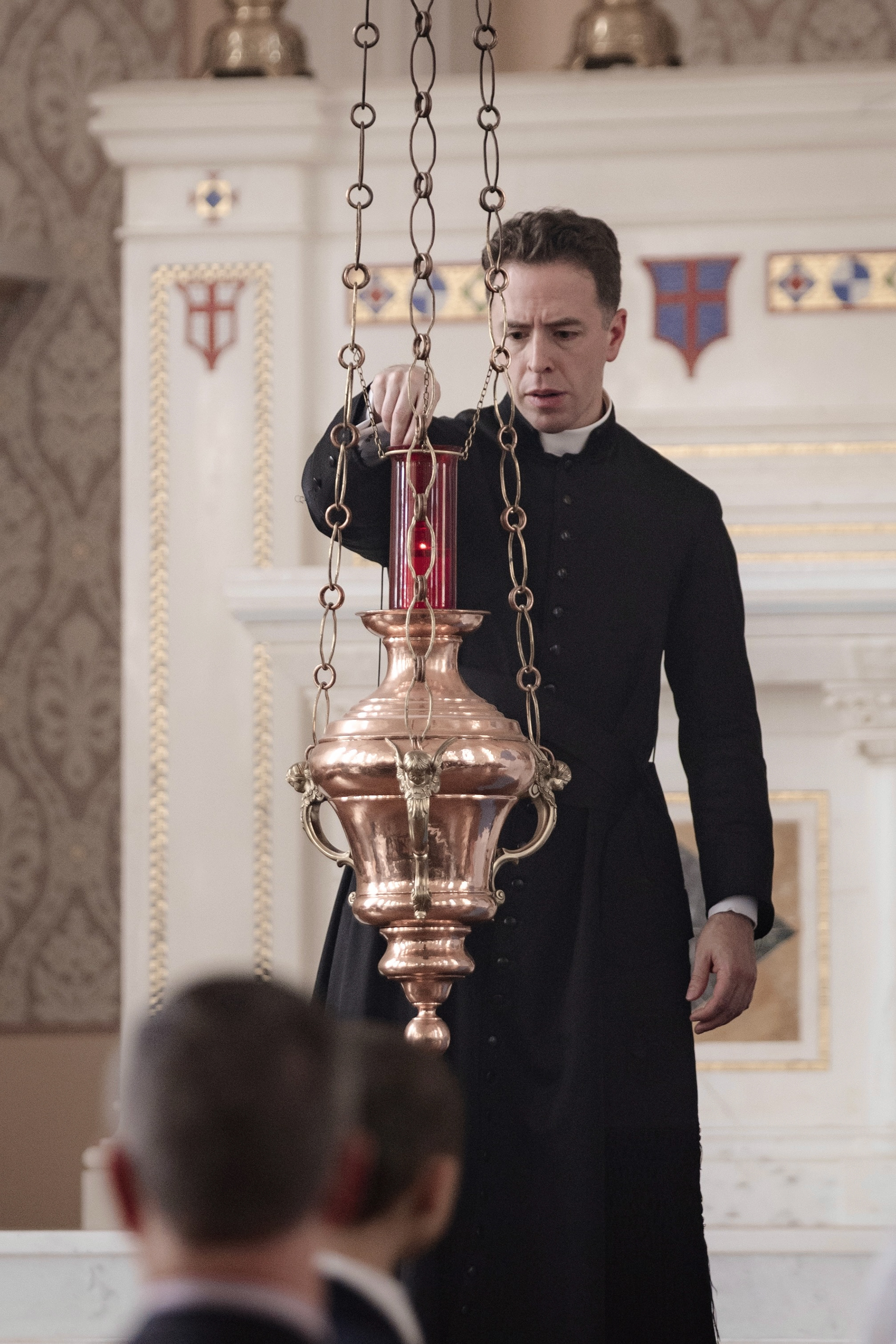
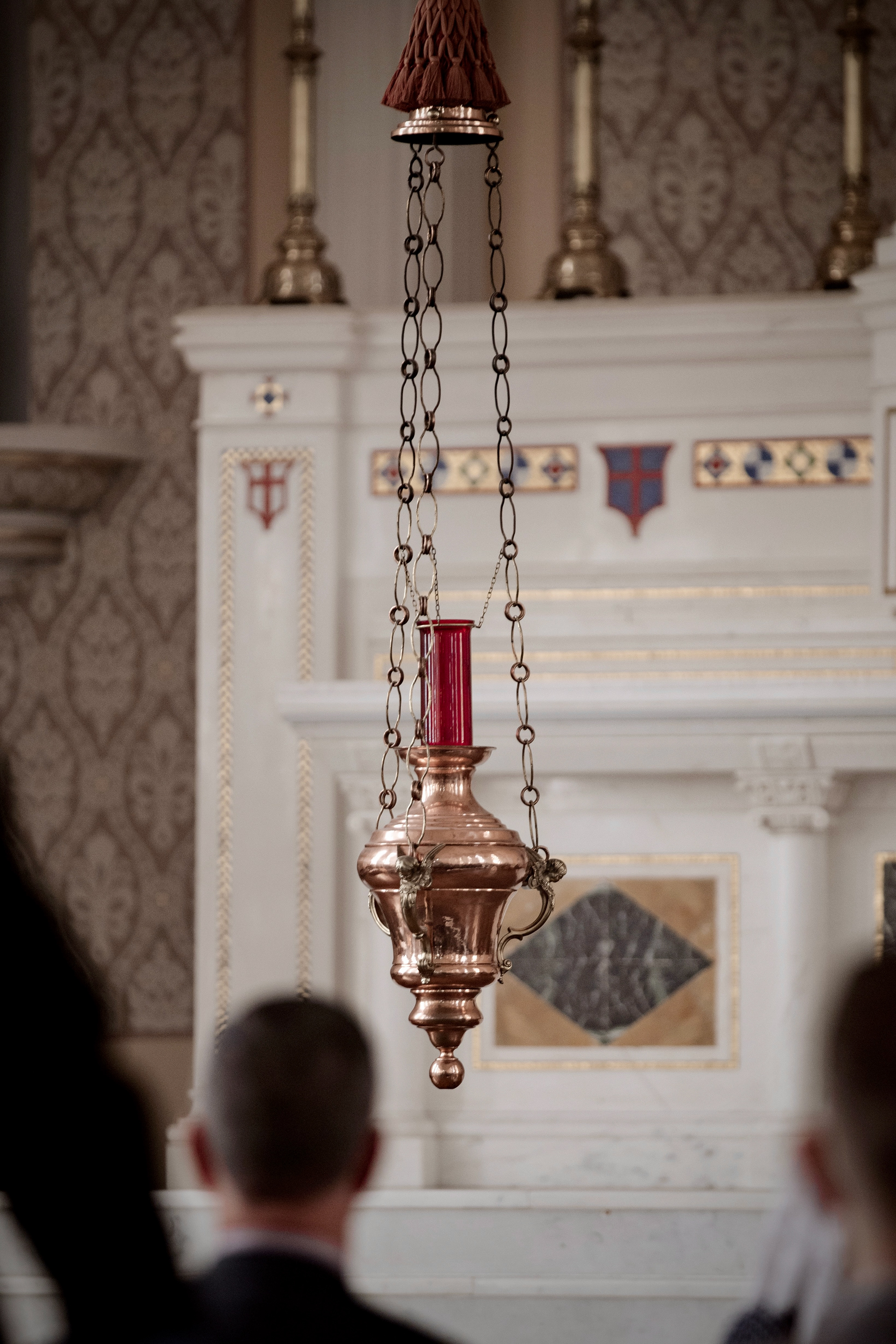
The sanctuary lamp is extinguished.
"I will declare Thy Name unto my brethren; in the midst of the congregation I will praise Thee."
Psalm 21:22
Psalm 21:22
"All the ends of the earth shall remember and turn unto the Lord and all the kindreds of nations shall worship before Him."
Psalm 21:27
Psalm 21:27
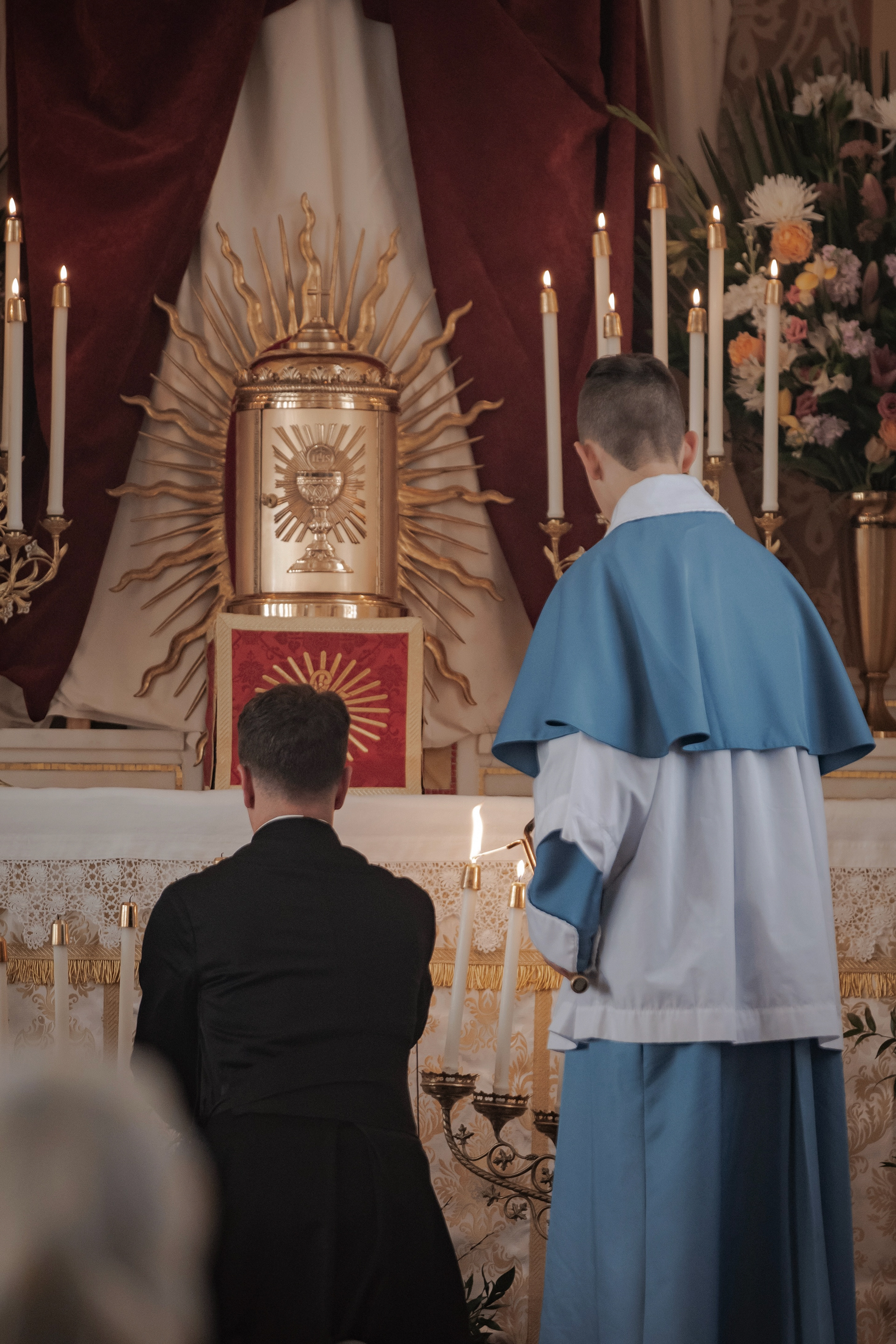
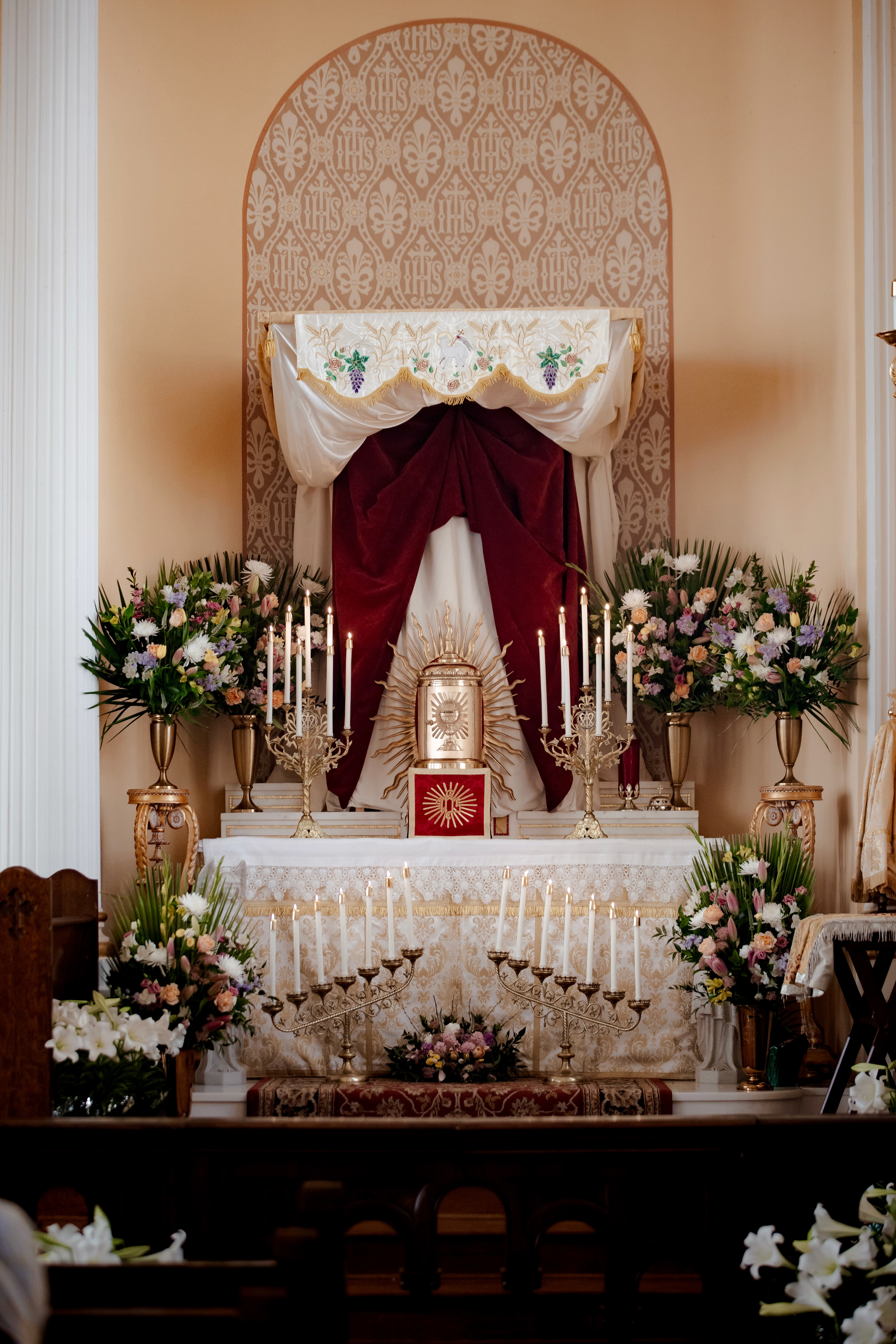
Jesus remains at the altar of repose, inviting us to keep watch with Him for just one hour.
Matthew 26:40
Matthew 26:40
"Weeping she hath wept in the night, and her tears are on her cheeks; there is none to comfort her among all them that were dear to her. All her friends have despised her, and are become her enemies."
Lamentations 1:2
Lamentations 1:2